the maritime review
spring 2025: THE ABSURD



Dear Readers,
Welcome to The Maritime Review: the 2025 edition of the Country Day Literary Magazine. As students with a passion for storytelling, we wanted to create an outlet for other students to share their work with the wider school community. Whether it was something produced at a previous time or specifically for the magazine, we wanted people to have the chance to contribute to a meaningful literary collection, and not just for a class. Our main goal was to display each artist’s unique voice among a multitude of perspectives.
Absurdism is a philosophy that explores the conflict created by the human search for meaning in an otherwise meaningless universe. We chose The Absurd as the theme for The Maritime Review because, in the face of an indecipherable universe, no art is too fantastical and no story is out of reach. Throughout this magazine, submissions range from the surreal to the mundane, from ghost stories to essays about pavement. The absurd represents the potential each person has to shape their own reality, and through their art, the students in this magazine give you a chance to get a glimpse of the meaning they have created.
Signed, The Editors in Chief,
Madeleine Seal and Magdalena St. Louis
Editors-in-Chief
Madeleine Seal
Magdalena St. Louis
Prose Editors
Anne Marie George
Nayara de Silva-Ahmed
Poetry Editor
Xander Roniger
Art Editors
Josephine LaGraize
Peetsie Goldenberg
Ella Armantrout
Layout and Design Editor
Ben Morvant
Editorial Staff
Will Heath
Iskra Jurkovic
Mireille Luparello
Cali Chapman
Clovis Layrisson
Ruth Katz
Harry Odem
Christian Myers
Marketing and Distribution Staff
Will Heath
Iskra Jurkovic
Clovis Layrisson
From all of us at the Maritime Review, thank you.
We hope you enjoy.
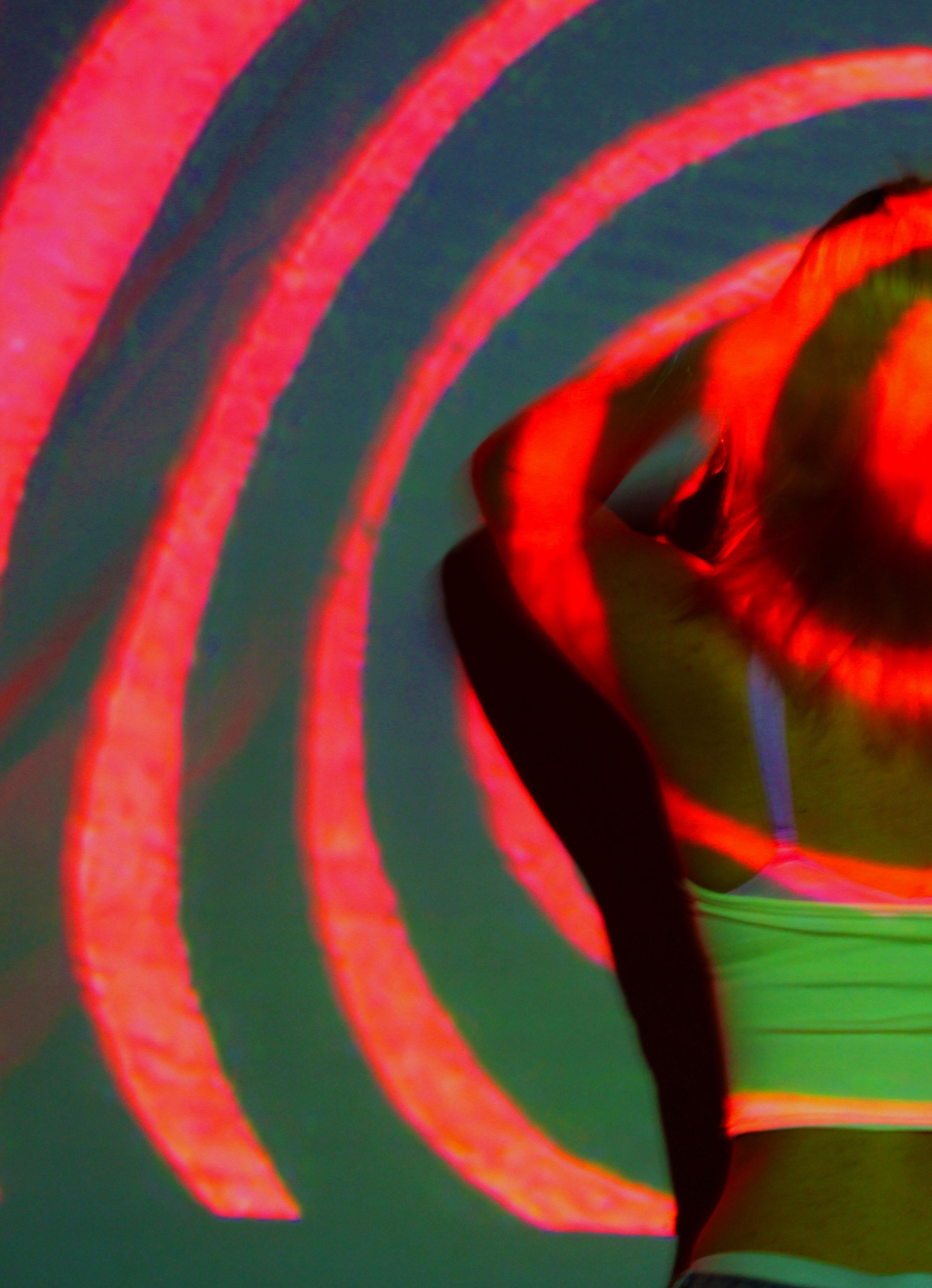

The secret to eternal life is charity. Or, at least a loan.
A woman sits in a dark room. A low buzz of electricity hums in her eardrums, ever present under her skin. A violet light in front of her blinks on and off, slowly and without rhythm.The woman’s wrinkled fingers rest on a large button. Every time the light turns on, she clicks it.
To eliminate all distractions, she has been instructed not to count the flashes of light or the varying seconds between them. Not like it’s possible to think, never knowing when the light will shine again. Before her mind can wander, the violet flickers on once more.
Wires feed into her arm and through the nape of her neck, tangled in white hair. Miniscule electrodes are woven throughout her skull. She no longer feels the wires or the discomfort of trying to rest her head. She does not feel anything.
The light blinks, but this time flickers and goes out quickly. The buzz of electricity in her head stops. It’s dead silent, and the light does not turn on again.
A voice echoes into the room, “We’ve lost power. Please stand by. Back-up generators will be activated in 1 minute and 30 seconds.”
No longer waiting for the light, she’s too aware. She notices how the wires pinch her skin, how her stomach feels hollow, how her legs ache. Above all, she notices how pitch black the room is. She is scared of the dark.
“Evelyn!” something deep in her memories calls.
She remembers the flying of glass and the blow of the airbag. She remembers the stars in her vision, the sirens, and then the dark; The weeks of being prodded and shaken and begged to wake up and only seeing black; Trying to tell her sister she could hear her, that she was awake. She remembered the darkness closing in, lapses lasting longer and longer, and the suffocating fear that sleep would take her for good.
“Power restored. Please return to your task.”
The purple light bursts on. It strobes frantically, damage control for the power outage. The humming in her eardrums returns, but quieter than before. Evelyn pushes the button in time, trying to clear her head.
Click..Click.ClickClickCl–
The sound reminds her of heels striking hospital floor. She remembers stumbling barefoot after the swishing ponytail and lab coat, dragging an IV drip behind her.
“Dr. Ashford, I heard you talking to that man,” Evelyn had called, “did you really figure it out?”
The scientist had turned, staring coldly through black-framed glasses. “Figure out what?” “Reincarnation.”
Ashford had smirked.
Another beam of light. Click.
Years ago, a scientist’s office, paperwork, an explanation.
“Consciousness can exist long after the body rots away. The brain only needs some sort of input to stimulate the neurons.” Dr. Ashford told her. “I believe I’ve found a way to transfer memories from a donor to another brain. The memories can be run through a program and rearranged for the optimal sensory simulation. The recipient can stay alive, through the memories of the donor.”
“What do I need to do?”
Dr. Ashford raised an eyebrow, “Our database is… lacking. Since this procedure is experimental, it would be free of charge, on the condition that you donate memories yourself. This requires the donor to be constantly awake for the ten years it takes to transfer, but not accessing any thoughts, emotions, or memories that could taint the experience of the recipient.” “ That’s fine, whatever’s fine,” Evelyn had said, breathless.
Dr. Ashford had hesitated before handing her a contract to sign.
“You’re very eager. You’re aware that we only perform this procedure on elderly patients?”
“Come get me, when I’m old. I won’t care. My body will be useless by then anyways. I’ve felt what it’s like to die. In that coma, that hospital bed. I don’t want to face that again for a long, long time.”
A flash of light. Click.
She feels energy pulsating from the wires behind her head. The course of her entire life, stored deep in long-term memory, flows through them. The memories are vacuumed through a power cord snaking behind a curtain. On the other side of the curtain sits a brain in a vat, filled with a glowing electrode solution. The brain gorges itself on her life story, a perfect virtual reality.
Although she can’t see behind the curtain, she can’t forget that the brain is there. She can’t shake the fascination she feels towards it, this long-gone someone living on after death because of her. There’s a certain intimacy to this brain existing through her eyes, yet never seeing her face. She’s aware that one day, that brain will be her, while another person who chose to give up the rest of their life for forever clicks the button in this dark room.
The voice booms throughout the room for the last time. “Please focus on your task. Do not continue to interfere with neurological signals to Patient #4098. Initiating donor anti-hijack protocol.”
The electric buzzing becomes deafening, drowning out her thoughts. Eternities pass as she sits alone with the button and the violet light. Finally, after 23,670 more clicks, it all fades. In her dying vision, she sees glasses hover over her, and gloved hands stretching forward with a scalpel. “It’s your turn now,” Doctor Ashford whispers, her voice faraway and muffled, “you must be excited.”
Evelyn opens her eyes. She is sitting at the head of a dining table, surrounded by parents and children all facing in her direction. Their lips are stretched taut to expose glinting teeth. A sprinkled cake sits in front of her, a candle shaped like “3” on top.
“Happy Birthday dear [evelyn] –” a robotic voice-over splices in her name – “happy birthday to you!”
Evelyn watches the flame flicker, as her mouth purses itself to blow out the candle. She feels her hands clap themselves together. She tries to speak, but in this memory, the donor had not chosen to do so. All Evelyn can do is stare into the static eyes of the mother gliding the knife through the cake.

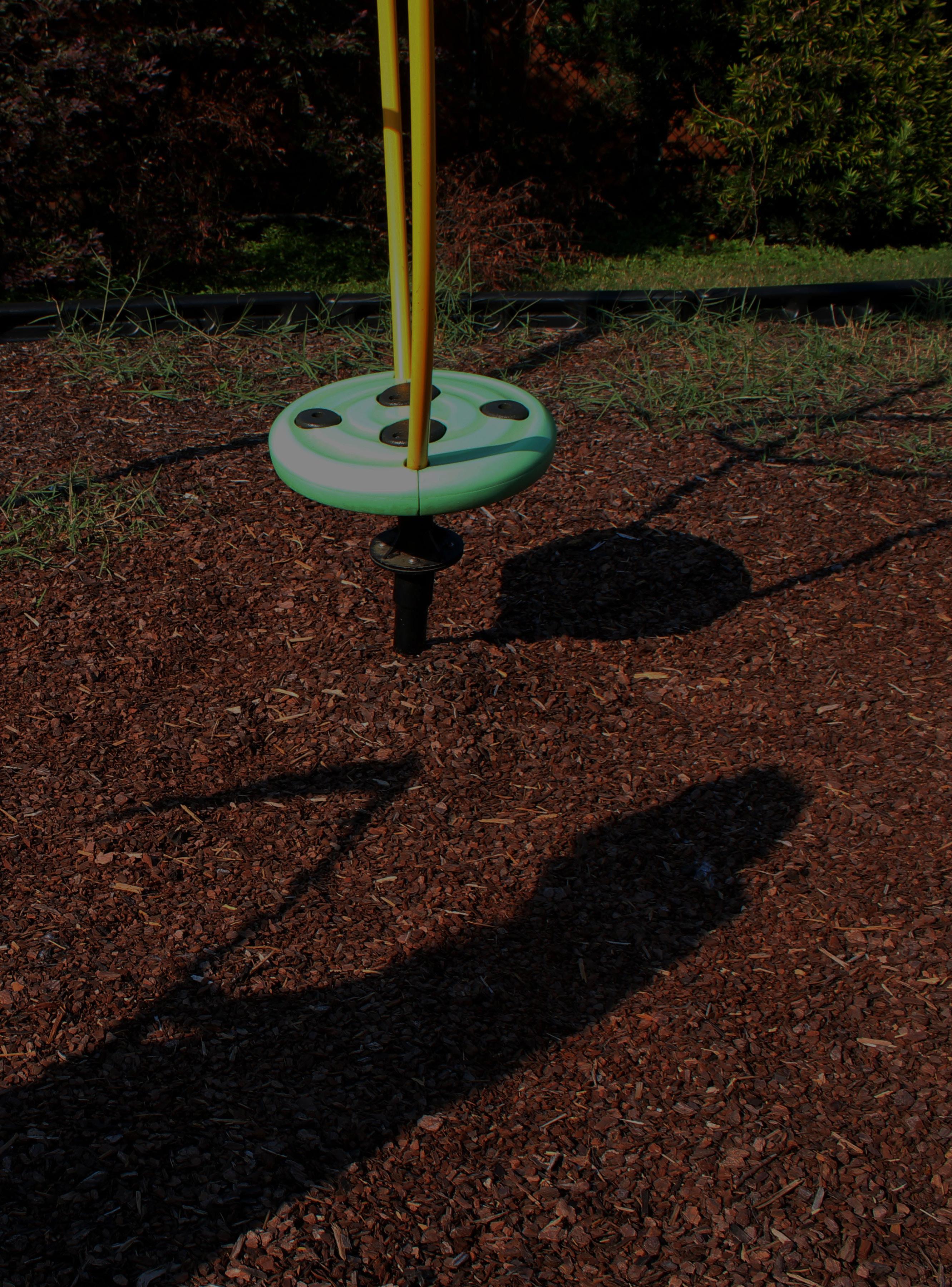
The four friends take in one collective breath as they stare at the edge of The Woods. The forest reigns tall, promising magic and adventure to any who enter. The girl looks among her friends;RedShoes,BlondeHair,GreenJacket.Theirfacesbreakintoasmile,presentedatlastwith theirsolemomentoffreedomthatcomesonceayear.Allexpectationsaregone,alltheirproblems haveslowlycometoahalt.GreenJacketdrawsalineinthedirt;theirstartingpoint.Fromthenon, theywillbeinadifferentworld;uncaringofwhatgoesonoutsideof The Woods. Theyeachplacea toe on the edge of the line as Red Shoes lets out a sharp exhale into the cold night and looks from side to side.
“Everyone ready?” they nod excitedly, hearts racing and eyes wild. She smiles, “See you on the other side.” Blonde Hair takes off first, veering to the right toward the old bridge, now overgrown with thick vines and rampant foliage. Green Jacket shrieks a blissful laugh into the sky as she leaps over a fallen log. She heads toward the direction of the old cabin, discovered by Red Shoes years ago during their first time in The Woods. Red Shoes goes toward the old pond, sometimes frozen over and other times filled with life.
Thegirlturnstotheleft,takinga fewstepsina directionshehadneverbeen. Theendlessunknown taunts her, urges her to discover what others haven’t. She sets off into a sprint as the trees around her blur; the mossy ground soaks her shoes in water as she darts around outstretched branches and jumps over yawning holes in the ground. She runs until her legs tire and her arms hang limp. The girl arrives at an abandoned playground, her footsteps thundering against the fallen leaves. Heavy-breathedandpink-faced,shestaresstraightaheadastherushingwindcoaxesshyteardrops from her eyes. She takes in the swingset with the long-rusted poles and cracked seats, the wooden see-saw, the merry-go-round that can creak loud enough to wake the dormant forest. A cold breeze tickles the back of her neck, and all at once, children rush about with giggles and shrieking laughter. They swing, run, dance; wispy tendrils of white mist follow them as their legs blur and they dart throughout the forest. Their eyes seem soulless, like they know everything yet nothing at all. They chatter and laugh, voices whispering countless secrets to the listening trees. Then they disappear; laughs echoing into the night, and the only remnant of their presence is the girl’s sharp exhale among the cold air. In the absence of the children, the playground seems to promise the chancetoexperiencechildhoodonceoveragain.Itholdsmemories,purejoy,seeminglyanescape from the current world. Among the leaves on the ground are scraps of tattered clothing, rusted water bottles, shoelaces, and old photographs. A dark substance covers the ground in patches and an unfamiliar symbol has been crudely carved into the dark by many shaking hands. A gust of wind passes through the unshaken forest. The girl stumbles forward and falls, her knees hitting the muddy ground on top of the strange etching. Goosebumps prick up on her arms as the laughter from earlier echoes throughout. It surrounds her, chasing her thoughts around in circles until the girl squeezes her eyes shut. Her head spins and the air chills as she hears the children approach. She forces her eyes open and is faced with the blank stares of the once-gleeful infants. They grasp hands as they form a circle around her, white mist hovering over their hands and their feet. It blankets the ground and surrounds the girl, freezing her already clammy skin. All the children shift their gaze from the girl, eyes drifting toward the stars. One ofthem whispers into the night, and the others follow. Their voices overlap, muttering secrets, answers, questions to
someone, something, or maybe nobody. They drill into her brain and feel as though they are attacking the very core of her thoughts. The girl clutches her head and pulls at her hair as she tries to ground herself. With each new word uttered, her body feels heavier. Her peripheral vision darkens as a terrible pressure builds in the air, and her arms feel stuck to her body. The children keep on talking, coldly aware of the pain they are causing the girl. She tries to kick out, to scream, to cease their collective mind, but she’s helpless to their cruelty.
The pressure is lifted. Her vision clears, and the children let go of each other’s hands. They gaze at the girl and at each other instead of the sky, and then they slowly step backward in unison. The wind moves through their hair simultaneously, their chests rise and fall together, and the slight crunches of the leaves caused by their light footsteps ring with the same sound. They walk in a zombified state, trudging through the mud, dispersing among the playground yet again.
She clambers to her feet and notices that the swingset, once enthralling and exciting, pales in comparison to the idea of a new place. Where did Red Shoes go? she thinks as the trees whisper back. As she looks back at the ghost-like children who have resumed their previous spirited state, her head and heart yearn for her companions. In the absence of the children’s chanting, the girl has never felt more alone. She starts toward where she thinks the pond is, met with the sounds of animals calling out into the night. An owl, crickets, the rustling of something unknown; they all welcome her.
She breaks into a run, breath coming faster and chest growing tighter. The trees spin around her, the stars form shapes in the sky, and all at once, the noises of the animals seem like they are each competing for her attention. I need to find someone. I need to find Red Shoes. There’s a gaping pit in her heart, like without human interaction, she may as well be dead.
This part of the forest is unfamiliar to her. Every year, the girl would go to the same places she had been before. It was only this time that she decided to venture out, leading her to the playground. But in this place, and at this time of night, she is helpless to the direction her feet take her. She finds herself stumbling over roots and running into the rough bark that covers the talking trees. Which way is up? Everything looks the same.
Eventually, she sees an opening in the thick woods ahead. The girl catches a glimpse of the moonlight reflecting off a glassy surface. She tries to run faster, but her legs refuse. As she approaches the pond, she sees a figure lying on the bank, and a characteristic color catches her eye.
“Red Shoes! Red Shoes, it’s me! Over here!” Red Shoes ignores the girl, apparently staring cloud-eyed into the depths of the pond. The girl gets closer, enough to see Red Shoes’ hair splayed across the forest floor, littered with leaves, sticks, and dark mud.
“Your hair is covered in dirt,” she says as she approaches, reaching down to fix it. She smiles, her manic state momentarily calmed in the presence of her closest friend. Red Shoes still doesn’t roll over and look at the girl; not even a twitch of her fingers. The girl touches her shoulder and forces her to turn over.
“Hey, why won’t you-” her words are abruptly cut off, and her heart drops to her stomach as Red Shoes’ head lolls to the side. Her eyes are unfocused, and a small stream of blood trickles from the corner of her mouth. The girl frantically grabs Red Shoes’ face, and her hand that was touching her hair comes away covered in blood. The girl shakes her, and when she doesn’t respond, she shakes harder.
“Hey! Look at me! Look at me please, please look at me!” she sobs as she lets go of Red Shoes’ head. “What are you doing? Get up, what are you doing at the edge of the pond?” she cries. Her eyes search her surroundings for answers. The pond is still, with no movement from anything below the surface. It’s as though everything stopped along with Red Shoes’ heart.
The girl pulls at Red Shoes’ hands, trying to get her to stand up and greet her. As she doesn’t move once again, the girl falls to the ground, clutching her own head this time. She screams, and a couple of birds flee toward the stars. The cacophony of the animals starts again, and the girl’s dizziness is unbearable. With one more look at Red Shoes, the girl backs away as fast as her feet will
take her, desperately retreating. Head reeling, the girl goes back to the only other place she knows to find comfort.
She spots the edge of the swingset, sees part of the slide creeping from behind a tree, and spots half of the strange etching still on the ground. As she approaches, the children’s voices ring with the same echoing laughter as when she first arrived. It’s chilling, but the familiarity of it calms her pounding heart. One of the children appears in front of the girl and stares at her, eyes wide and blank. The child slowly moves gracefully among the foliage and beckons for the girl to follow her. Together, they wind through the trees until they reach the symbol etched on the ground, and the girl’s heart drops to her stomach for the second time that night.
She gasps as she sees that another figure lies on top of the symbol. This time, it has black hair and sports a blue shirt, just like the girl. She walks closer with bated breath, wondering who else could have died tonight. The girl brushes the hair away from the figure’s eyes and sees her own face looking up at her, glassy-eyed and slack-jawed. She shrieks and falls backward, looking around wildly for an answer.
It’s only then that she looks down at her own body and sees it mimicking the translucent appearance of the children. She waves her arm around, and following it is the same white mist that follows the lost children and coats the playground. The girl shakes her fallen body, desperately trying to return to her living state. She slaps her arms, trying to rid them of the mist that follows her. The child grasps a now warm hand around her wrist and pulls the girl to her feet. His eyes say to her,
“Come be a kid with us now. You’re already gone.” The girl lets him lead her to where the other kids are waiting with smiles and encouraging words. “You’ve been hallucinating since you’ve died, but it’s alright. You’re with us now.” She steps into the crowd of children as they all welcome her, eager to witness her new beginning.
As the girl looks back over her shoulder to take one last look at her body, she sees Red Shoes rush from the edge of the trees and scream, falling to her knees at the sight of her lost friend.

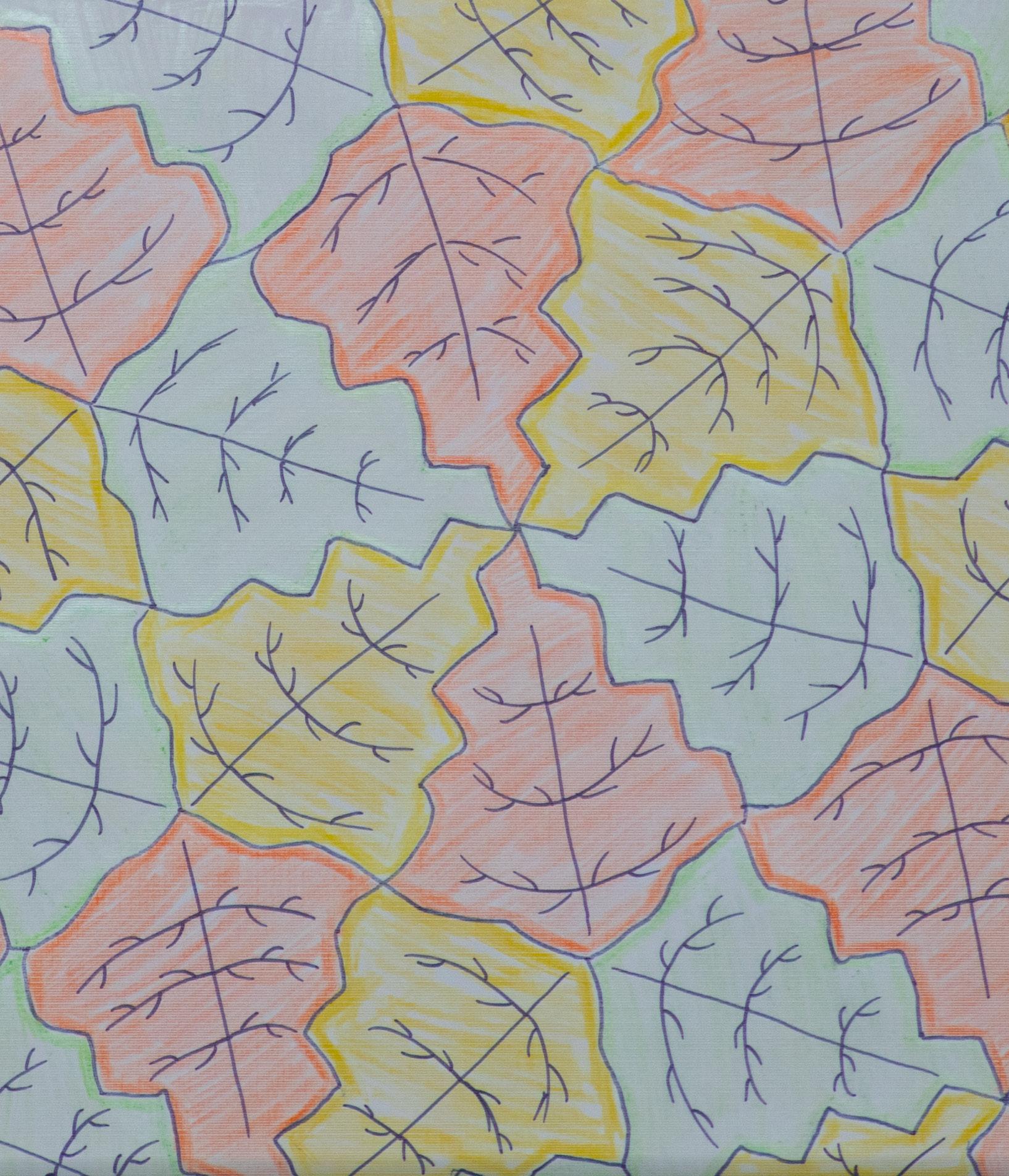
Autumn Leaves
Georgia Palmisano, 9th
Colored pencil on paper
I was scrolling Google for inspiration for my tessellation, and one caught my eye. It was an array of leaves, and I was impressed by how well they fit together and decided to try to create a leaf of my own. Twice, I tried freehanding the leaf and ended up with something that would not fit into itself. For my third tile, I was more intentional about making sure each side would line up and fit into each other, and it worked. The spiked sides of the leaves interlock with the other side of another leaf, and the bottoms curve up on one side and down on the other to make the bottoms interlock as well. I decided to add in the veins of the leaves inside each tile and colored them the typical colors of leaves: orange, yellow, and green. The title of my piece is Autumn Leaves. I wanted the title of the tessellation to be fairly self-explanatory, and the piece displays a series of leaves in the colors they turn in autumn.
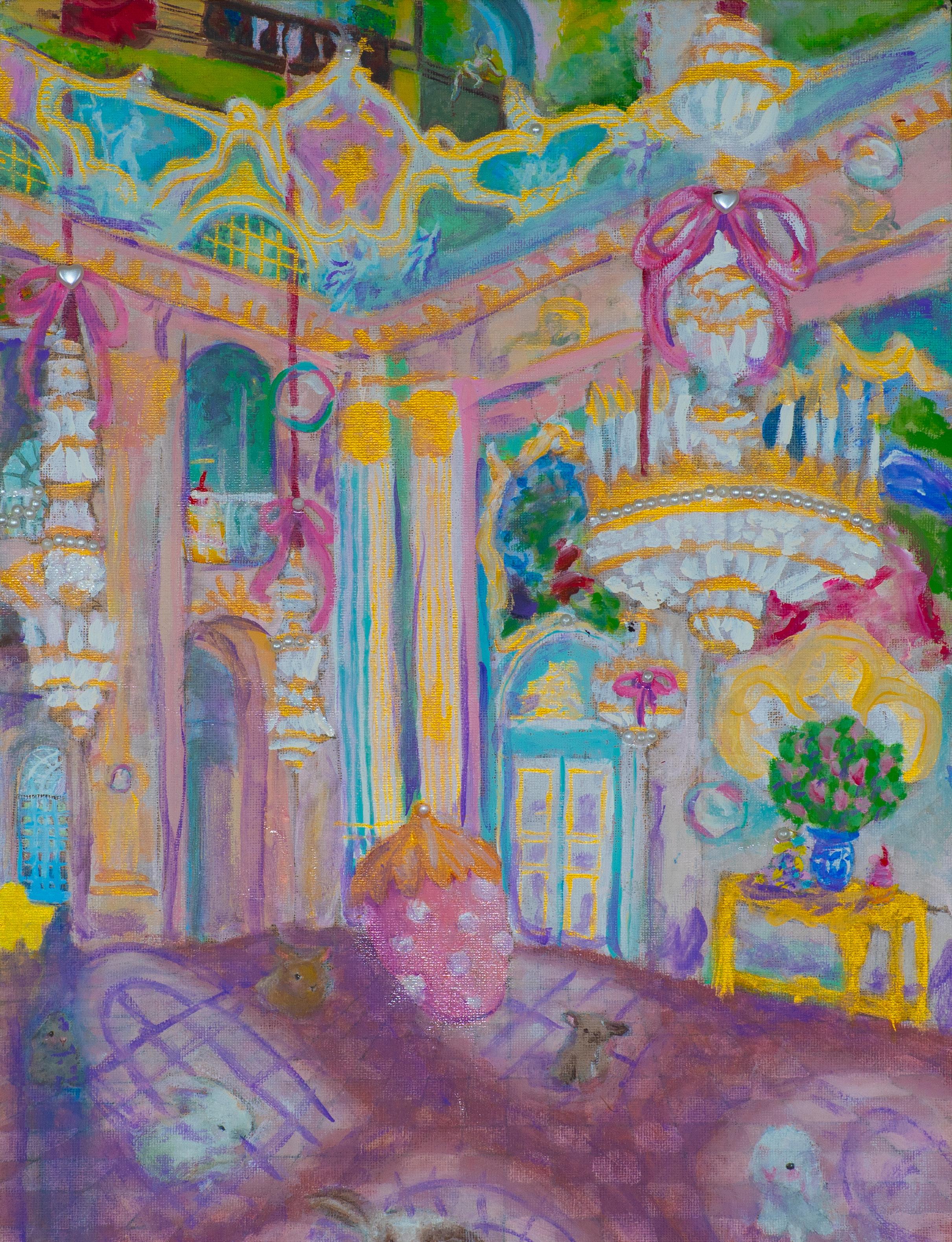
From the stars, a petal falls drifting slowly to the ground
A seed is planted, hopeful and loving
Its roots grow, left and right and to connection woefully bound
And from the dirt, a stem emerges and begins to sing
The stem shoots up, toward the sky and sun
Healthy and tall, it continues with love and care
It reaches its peak, and a flower emerges beautiful; searching for someone
So it turns, towards the light open and bare
Yet the sky is barren, no rain clouds or shade
And the ground is desolate, with dry and splitting earth
So the flower burns, petals broken and frayed
Until one falls, and drifts down to that uninhabitable floor
There the petal sits, alone and with disdain
Until the wind rises, and it floats away to start again
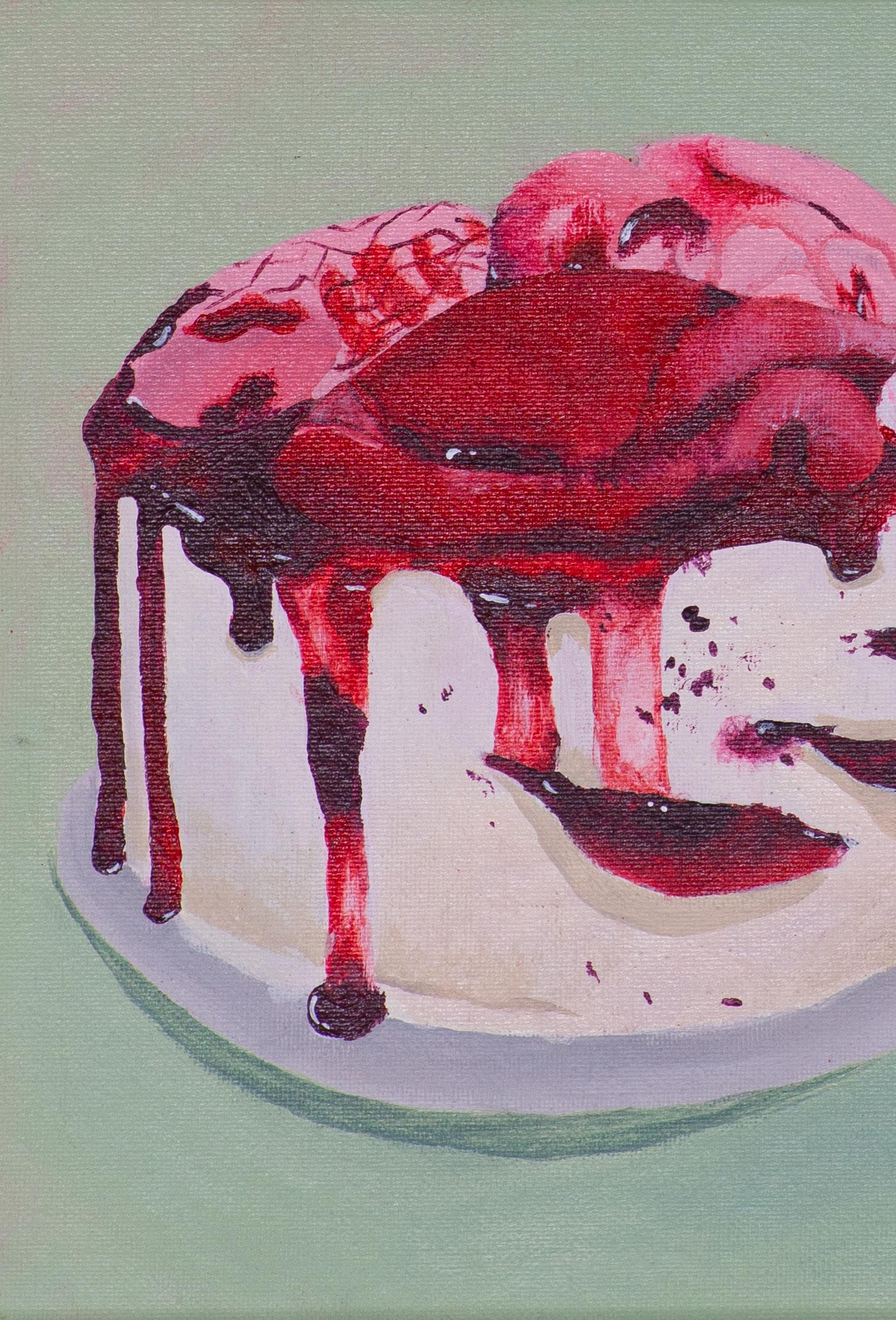
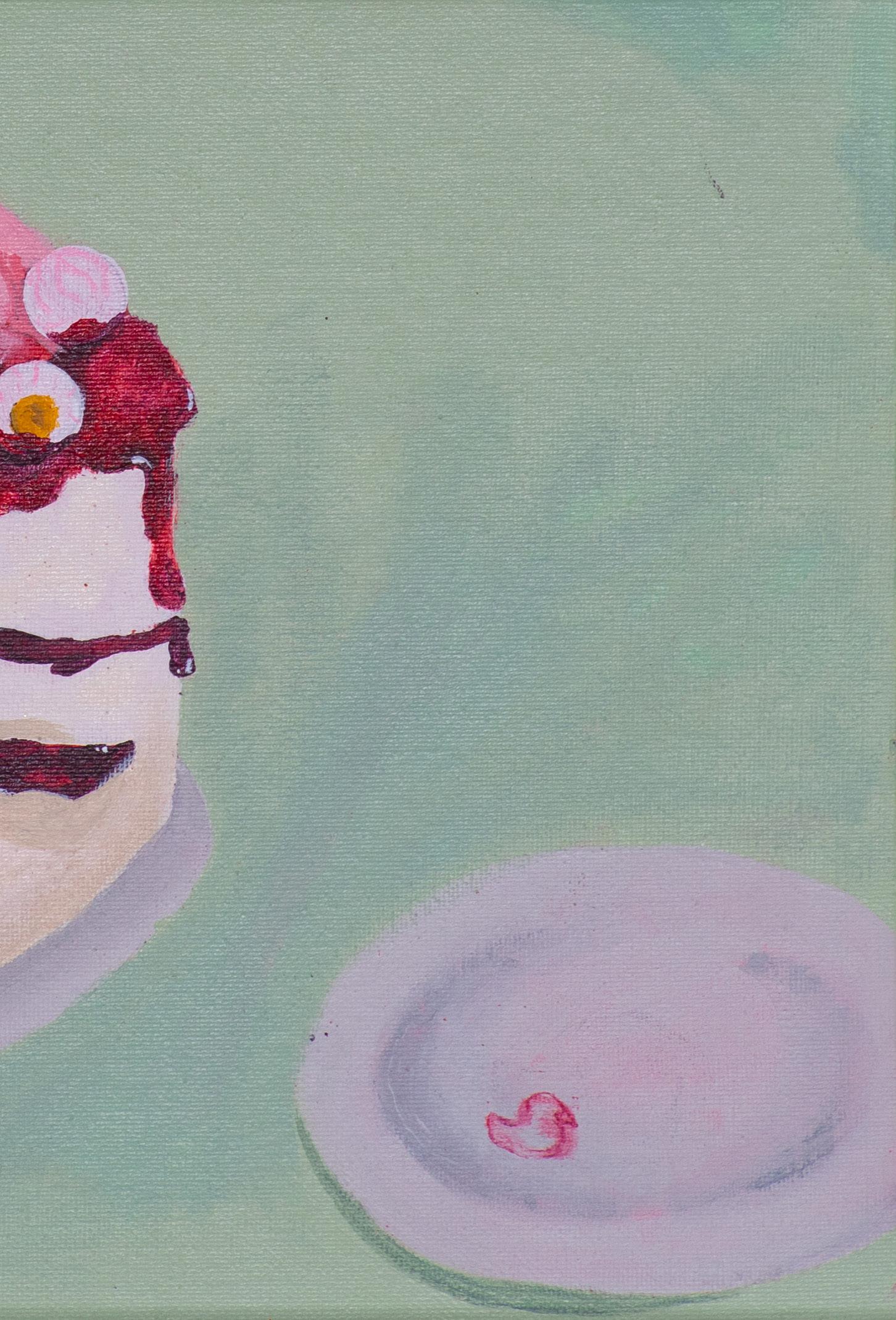
Every day, people move, walking, driving, cycling, without ever considering the ground beneath them. Sidewalks and roads exist as silent companions to human motion, expected yet unnoticed. They are so deeply woven into daily life that they become invisible, much like the air we breathe. And yet, if we pause to reflect, these paths tell a profound story, not just of engineering and history, but of human ambition, movement, and the way we structure our existence. These roads, paved and worn by time, are more than just infrastructure. They are symbols of progress and connection. They dictate where we go, how we move, and sometimes even who we become. But because they are always there, always beneath us, we rarely stop to question their significance.
Sidewalks and roads are taken for granted because they work so well. They make movement effortless, smoothing the journey from A to B, just as routines guide our lives. But behind their simplicity is an extreme complexity, shaped by human intention and problem-solving. Engineers meticulously design those paths, considering every detail, how a sidewalk slopes to accommodate rain, how asphalt expands and contracts with the seasons, how a road must curve to prevent accidents. Beneath every street is a hidden architecture, a layering of material, foresight and labor, all meant to support lives that will never stop to acknowledge them. In this sense, roads and sidewalks are like the unseen structures of the human campaign, the traditions, the systems, the quiet forces that guide us without our realization or attention. Just as we move effortlessly down a road, trusting that it will hold us up, we move through life on unseen infrastructure built by those who lived before us. The path is set, and we walk it, often without asking why.
B eyond the engineering and science of their construction, sidewalks and roads carry history with them. Every stretch of pavement is a layered artifact, a record of movement, change, and human intention. Some roads trace their origins back to ancient trails, once walked by early travelers, merchants, or soldiers. Others were carved into the earth with sweat and stone, shaping the story and cultures of cities. The roads that once led to prosperity can just as easily lead to decline. When highways reroute commerce, when bridges collapse, when once thriving streets are abandoned.
A single road can hold a thousand stories. The cobblestone roads of old European towns have been worn smooth by generations of footsteps, each one carrying a different life. The great highways of modern nations tell a story of expansion, of manifest destiny, of the desire to move faster and farther than ever before. Even the smallest sidewalks, cracked and uneven, speak of time passing, of the silent patience of a place enduring those who travel across it.
Yet, for all of this history, no one stops to listen. People walk and drive, absorbed in their own destinations, never thinking about the thousands who have come before them or the millions who will follow. The path remains indifferent to those who tread upon it.
Movement Without Reflection
Perhaps the most fascinating thing about roads and sidewalks is not their construction or
their history, but the way they mirror human nature. Life itself is a journey, one filled with roads we choose and roads chosen for us. We move forward, often without thinking, following paths laid out by others, trusting that the road ahead is the right one. But how often do we stop to ask: Who built this road? Where does it truly lead? Why do I walk this way and not another?
Modern life encourages movement but discourages reflection. Roads are built not for standing still, but for getting somewhere. Speed is valued over stillness, arrival over journey. But what if we took a moment to stop? To look down at a sidewalk and consider all the lives that have passed over it? To recognize that every street corner, every intersection, every stretch of highway is a choice, an option among infinite possibilities?
The Beauty in Noticing
To notice roads and sidewalks is to notice life itself. It is to become aware of the unseen forces that shape our world, of silent structures that hold us up. It is to recognize that the ordinary is never truly ordinary, but rather the product of effort, of history, of choices made long before we arrived.
We are all walking a path, whether we acknowledge it or not. And while it is easy to rush forward, focusing only on the next destination, there is something deeply human about pausing, looking down, and realizing that the ground beneath us is not just a road, it is a story, a question, and a quiet invitation to wonder.
So, the next time you step onto a sidewalk or drive down a familiar street, take a moment to consider the journey beneath your feet. Because even the most overlooked paths are rich with meaning. If only we choose to see them.
“I never could figure the difference between a dive-bar and a coffee shop,” Michael thinks. His hand wraps around the old brass door-handle of his local coffee stop. The handle, having internalized the cold, wet weather of the month, bites back. Mike freezes for a second before muscle memory launches the door open and propels him in.
In a small, rumbling voice—like that of a distant textile mill—he orders two small drip coffees to-go. One with room for cream, the other without. After receiving his morning fix, he makes his lonely, tired way out to the car.
BRT-T-T-T…
BRT-T-T-T…
BRT-T-T-T-T-T-TSSSBRRRRRRRRRRRR…
With the fervor of a bed-ridden cancer patient, his ‘92 pick-up sputters to life. Kicking it into gear, he lurches down Marconi, then turns onto Lakeshore, then again onto Beauregard. After driving for a minute, he pulls off to the roadside. His clock reads 5:12.
It’s one of those mornings when even the roosters forget to crow—the silence is palpable. The blackness of the sky is interrupted only by spattered flecks of stars. Darkness floods the city, staved off only by the luminescent towers sitting adjacent to the roads. Grass along the levee is painted in a watery film, shining under the light of the street lamps. Mike’s shadow slowly reaches across the berm as he approaches. His stride stretches along the slant, pulling him up the hill; the cuffs of his pants becoming slightly soaked. Hues of orange diffuse around the opposite tree-line. Composing himself on the ground, he sets the coffees to his left on the damp earth and reaches into his pockets. A cigarette emerges first and nestles itself squarely into his mouth. Next, he reaches for a small, flat, silver box with a dimpled knob on one end. He sets it next to the cups. Finally, with a rehearsed reverence, he reaches into the front left pocket of his jeans and retrieves an oblong, soft nugget—a champagne cork. He stares into the subtle grooves and grain of the wood. A pale, longing mist washes over his eyes. After a moment of reflection, he sets it down in front of him.
Reaching back into reality, he unscrews his flask and pours a generous shot into one of the steaming coffees. Out of another pocket emerges a match book. With a quick strike, he lights the cigarette—pausing for a moment to take a long drag, releasing a drowsy puddle of smoke into the morning air.
The orange and red hues have engulfed the front hemisphere of Michael’s view. The burning point of a cigarette becomes visible over the distant trees.
Mike sits for a moment. He watches the sapling fire grow brighter still. Lost in his mind, he tumbles from memory to memory. Eventually, he walks to the water’s edge and slowly pours the second coffee into the canal. He sits and watches the sunrise, thinking of her. He feels the cork again.
Audrey hadn’t wanted a big wedding. Neither had Mike. They were content on a shared night at home. So that’s what they did. That morning, they got groceries, got married at the courthouse, and picked up their dry-cleaning. Despite their apparent modesty, they saved enough to
buy one bottle of top-shelf, genuine champagne. The cork reminded him most of her voice—the subtle grooves and bumps echoing the raspy warmth of her speech.
After pouring her coffee and finishing his own, he returns to the top of the levee. Pushing everything into his pockets and driving the cigarette into the ground, he walks down and back to his car, leaving the wispy clouds to watch the warming sky alone.
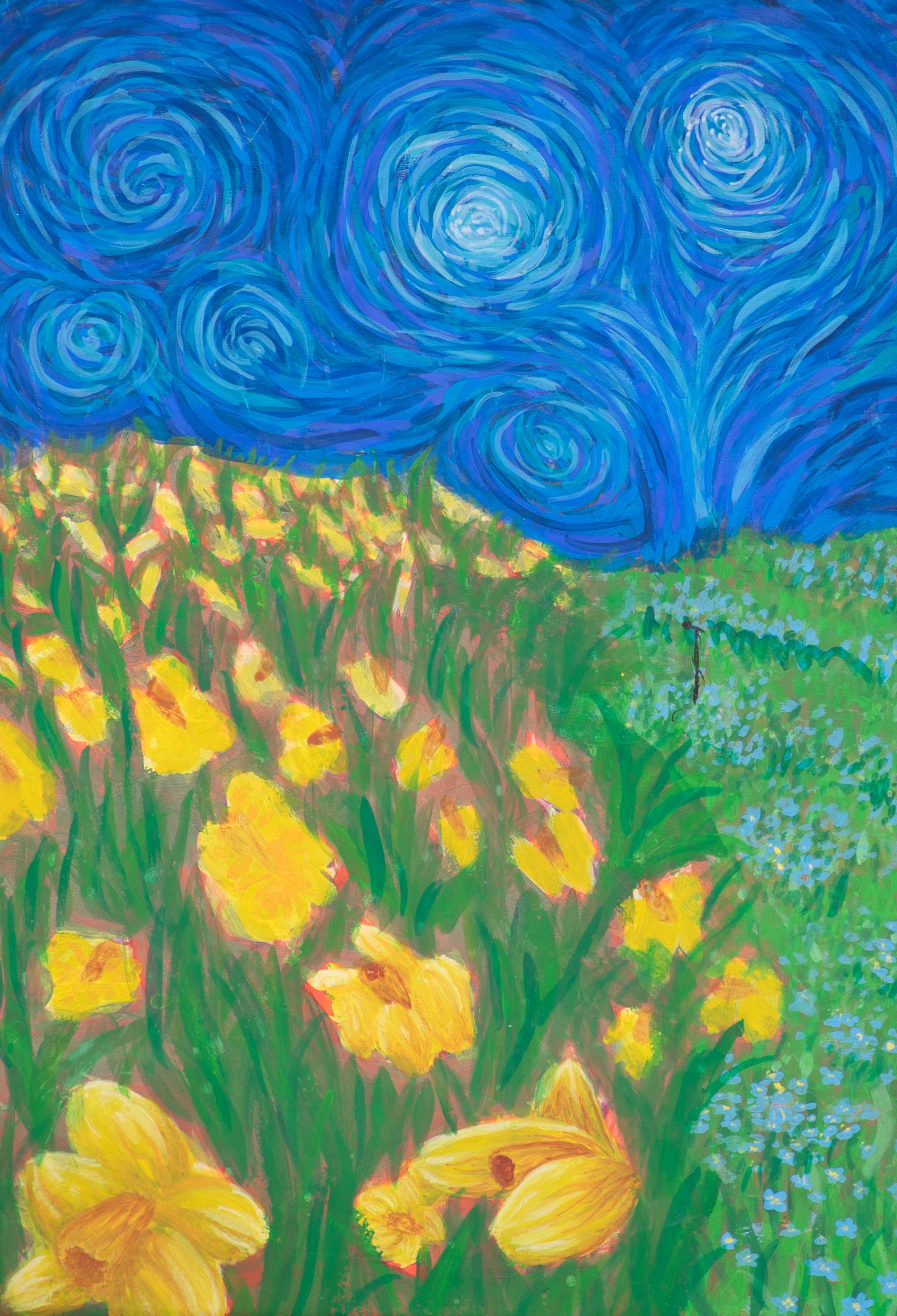
Is This Not Love?
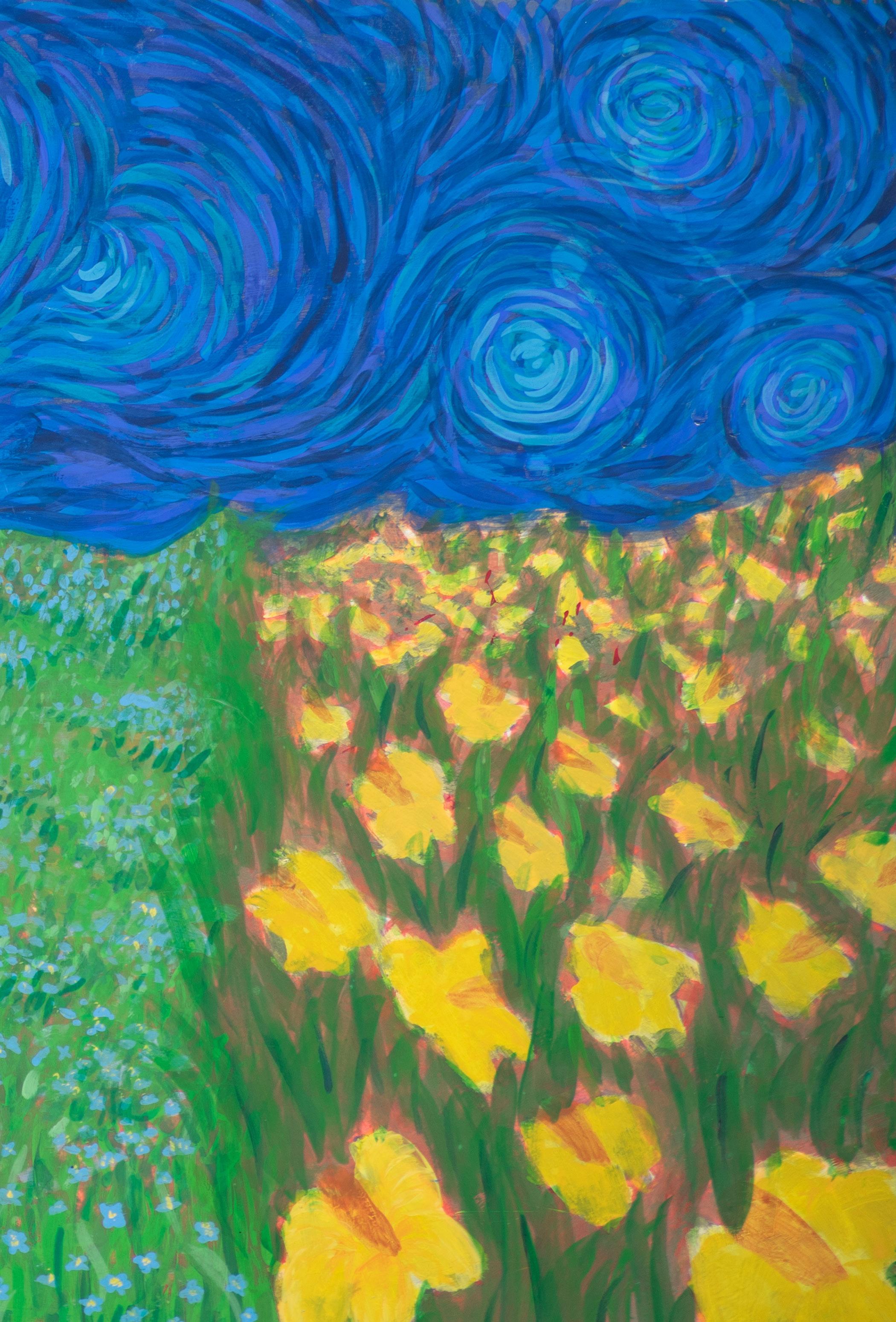
With a visionary’s steady hand a man painted a dream in black and white.
Hues of red and gold
bold shapes so grand Africa’s spirit was drawn across the sea, to a modern land.
The brush a rhythm, the elegant strokes an instrument
The beast of chains no longer, the red has changed into dye.
But for those who cry their voices heard.
His beacon of creativity is hardly murmured
The canvas is edged in soft greys and blacks
Figures rising, gracefully
The jungle contorts with divinity
Re-igniting the spark laid dormant
Shine the figures say, shine!
Don’t let our message be lost once more
For we are descendants of Africa
Strong and resilient like those before
A legacy drenched in culture, absent of impurities, In every mural, dreams inspire.
Aaron Douglas, artist true, Africa’s light remains and brightens every room….
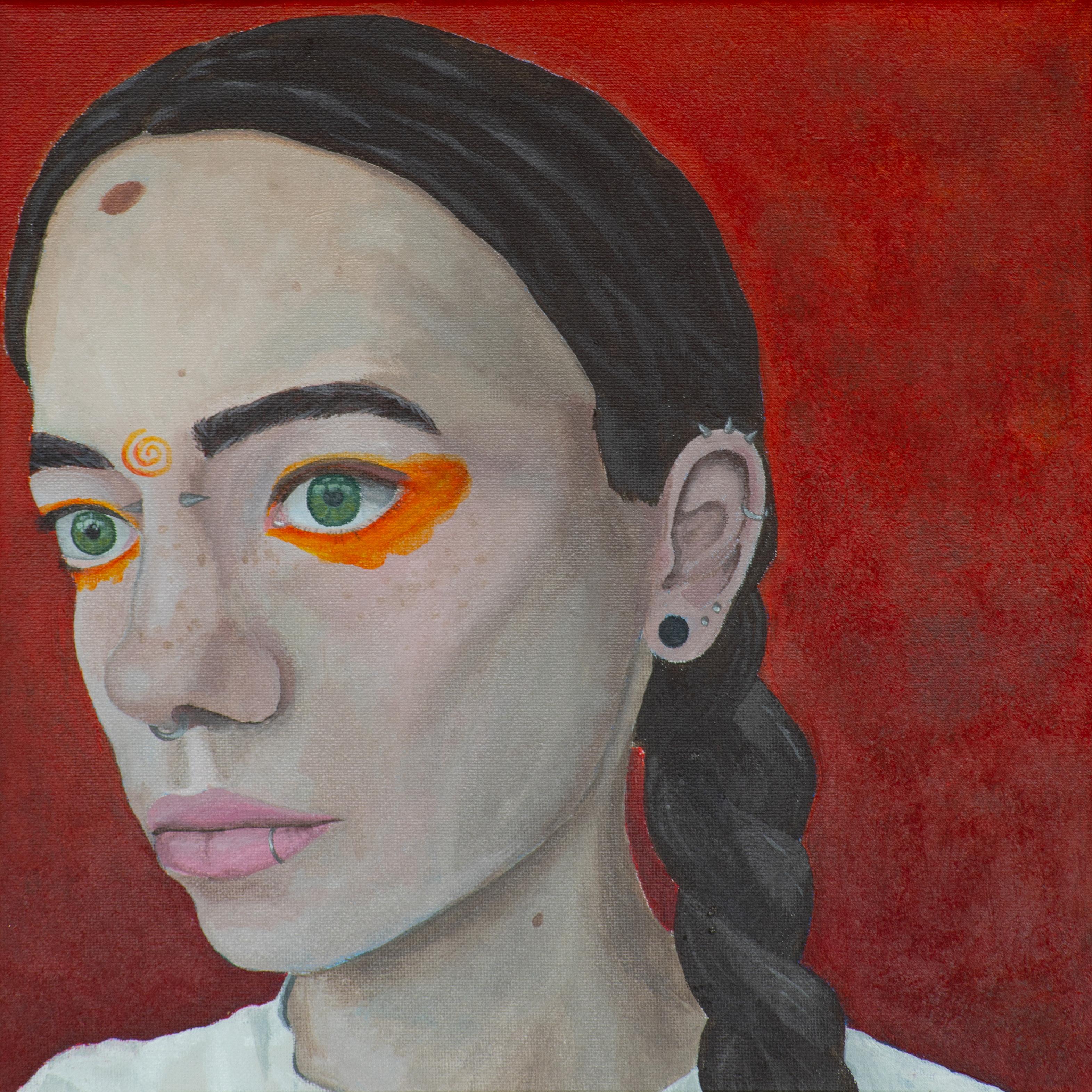
My legs are weak. They tremble each step across the field. Sunlight is torture, Searing, branding my skin.
I wait for the day that I become what I’ve promised. Tales have been told of what we could be. Only those tales are heard by our kind. My beauty, my songs, my heart, my fire. I want to be me.
My legs wander without a destination in mind. A vague future carries me across the ground. Fields morph into gravel, Harsh sunlight evolves into a breeze.
I see what I want. Ghosts of wings
Aerial perspective
Newness
I will be me.
My eyes are open.
I take in what I’ve missed.
My love. My family. My life.
The sunlight no longer scalds me, It fuels me.
The world is upside down. Trees hang off the ceiling, Rain falls in reverse.
The world is upside down. Or maybe I am upside down, Or I was.
They stare. They watch. But I don’t care.
I am no pest.
I am beautiful.
I am me.
During the Great Migration, formerly enslaved people were still burdened with racist stereotypes and discrimination. It was extremely dangerous to be in the south at this time as a person of color. African Americans and formerly enslaved people were restricted from showing their talents and what they were capable of. They were confined to labour and work with no reward for how much they actually helped. This is represented through the life cycle of butterflies. The first stanza represents the urge to leave. People found loopholes to the Thirteenth Amendment so they could still enslave people. African Americans were still doing labor for people and had to deal with Jim Crow laws that restricted their participation in society. Caterpillars are not as admired as butterflies. The caterpillar represents the urge to leave what is holding one back: in the caterpillar’s case, its body; in the case of African Americans, the south.
The second stanza is the journey to the north. The journey from southern states to northern states was treacherous. They faced danger and adversity along the way and had no way of knowing that the north would be any different.
The third stanza portrays the speaker’s arrival in the north and having the opportunity to restart her life. I wrote, “The world is upside down. / Or maybe I am upside down, / Or I was” to describe the change in perspective upon arriving in a new place. The general perspective on slavery and African Americans was very flawed at the time, so I used that horrendous view (and the fact that when butterflies emerge from the chrysalis, they are upside down) to show the differences between northern and southern environments and perspectives.
My process started with researching symbols of change. The options I came upon were phoenixes, butterflies, and spirals. I had prior knowledge of the life cycle of butterflies out of personal interest. I realized that both the Great Migration and the life cycle left something behind, in a physical and metaphorical sense. I wrote down the similarities between the two and started writing some of the symbolism into the poem, titled “Migration.”

As Edna descends the stairs from the Ratignolles’, she is suddenly overcome with a strong wave of nausea. Her legs slowly weaken as she struggles down the final stairs and stumbles onto the landing below. She hastily finds a place to sit before beginning her walk home.
The night air is dewy and moist, the flowers and leaves reflecting the blue glow from the moon. Edna closes her eyes, hoping to settle her mind. Though she knows she has nothing weighing on her, she is unable to shake the lingering dread that possesses her thoughts.
She tries to picture the summer. The water, the sounds, the sun beaming on her skin. The serenity of Grand Isle. She is standing at the edge of the water, the vastness of the ocean overtaking her mind. Without responsibilities, without anyone waiting for her, she breathes in the fresh, salty smell of the ocean, but something is not right. She looks down at the water, and it slowly retreats. The distance between her and the ocean begins to grow, but she stands still, unwavering. She tries to run towards the water, but no matter how quickly her feet move back and forth, she comes no closer. Her eyes fill with tears, her face gets hot, and her head becomes foggy. She feels a hot tear drip down her cheek, and she is brought, at last, back to reality.
The moon has risen higher and deeper in the night sky. It has risen significantly since Edna’s brief spell of sleep. Though her mind is still in a haze, Edna slowly begins to realize her situation. She gathers herself and abruptly starts for home. The old dread starts to swallow her. She feels herself unable to catch a breath, as though someone is grabbing her head and hurling it beneath the water, silencing her screams.
When she finally arrives at her pigeon house, there are only two candles shining through the window. Edna hurriedly stumbles onto the porch and through the door. She shudders upon entering the house; a cold wind blows through the slightly cracked windows, and a strong metallic smell still lingers in the air.
“Robert,” Edna calls out.
The room is dark besides the two weak candles glowing in the window and the blue moon shining onto the floor. Edna’s head begins to throb, the dread getting stronger and more aggressive, attacking Edna’s every thought.
Once more she calls out, “Robert!” She receives no response.
Out of the corner of her eye, Edna notices the moon illuminate a glowing redness coming from the floor. Edna looks down and sees a sea of crimson swallowing her feet and grasping at the edge of her dress.
Edna lets out a piercing screech as her eyes discover the source of this red. She runs to the lifeless body of her lover, still barely warm. Edna lets out a desperate cry and sobs into her crimson hands.
Edna is unable to think, her mind engrossed in a thick fog. Her body weakens to the point of numbness, and she begins weakly crying out to the night for help. She tries to rise, but her legs give out under the weight of her body.
Edna crashes to the ground, her head slamming against the floor.
The sun shines through the large window in Edna’s room, the glow latching onto the particles of dust floating before her. As Edna begins to rise in her bed, her head is suddenly met with a throbbing ache. Still hazy with sleep, she slowly comes to terms with her surroundings.
She looks to her side and notices Madame Ratignolle sleeping in the chair beside her bed, her face red and puffy from crying.
Though she wished it to be untrue, Edna knows her nightmare is not just a fictitious illusion brought on by the night. Edna feels a searing pain in her head as though someone is sticking a hot knife into her brain.
She once again tries to rise from the bed but is unable to; instead, she knocks over the candle stand beside her bed, jolting Madame Ratignolle out of sleep. Before Edna is able to open her mouth, Madame Ratignolle is beside her, soothing her and telling her to go back to sleep.
“Edna, you must go back to sleep,” Madame Ratignolle softly repeats in Edna’s ear, but Edna protests and insists on getting out of bed. Madame Ratignolle, not energetic enough to fight against Edna, reluctantly follows as she rises from her bed and exits her bedroom.
Edna begins to quit her house when a small piece of paper lying on the floor catches her eye. A short message written in a familiar handwriting reads, “A world in which we can never be together is one I do not wish to live in. I cannot live on like this, but you must. I love you, my dear.”
Edna slowly walks down the street, barefoot and in her house dress, holding the letter softly between her fingers. She stumbles down the street, warm against her feet from the morning sun. Ahead of her, she hears a soft, sad squawk. As Edna nears the sound, she discovers an innocent adolescent bird, recently fallen from its nest, attempting to fly but struggling to get off the ground.
Edna watches the poor creature struggle and cry, longing to be back in the safety of its nest, but she knows that the bird will never return. The reality the bird once knew has changed in an instant, and no matter how much it wishes to return to that reality, it will never be able to do so.
Edna reaches down to the small animal, and scoops it into her palm. The smooth underbelly of the bird feels soft against her hands, still rough after being scrubbed raw. Edna enviously stares at this small creature as it shrieks in her hands—it has its entire life ahead of it, full of opportunity and free from burden. Edna lifts her palms to the sky and gently thrusts the bird into the air. Watching as its wings beat against the air without uncertainty or fear, Edna retreats, and the bird leaves her view.
She wonders how she got here. If she were given a chance to start over again, how might she escape this cruel fate? But no such chance exists. She must continue to swim as the current drags her down, into the abyss.
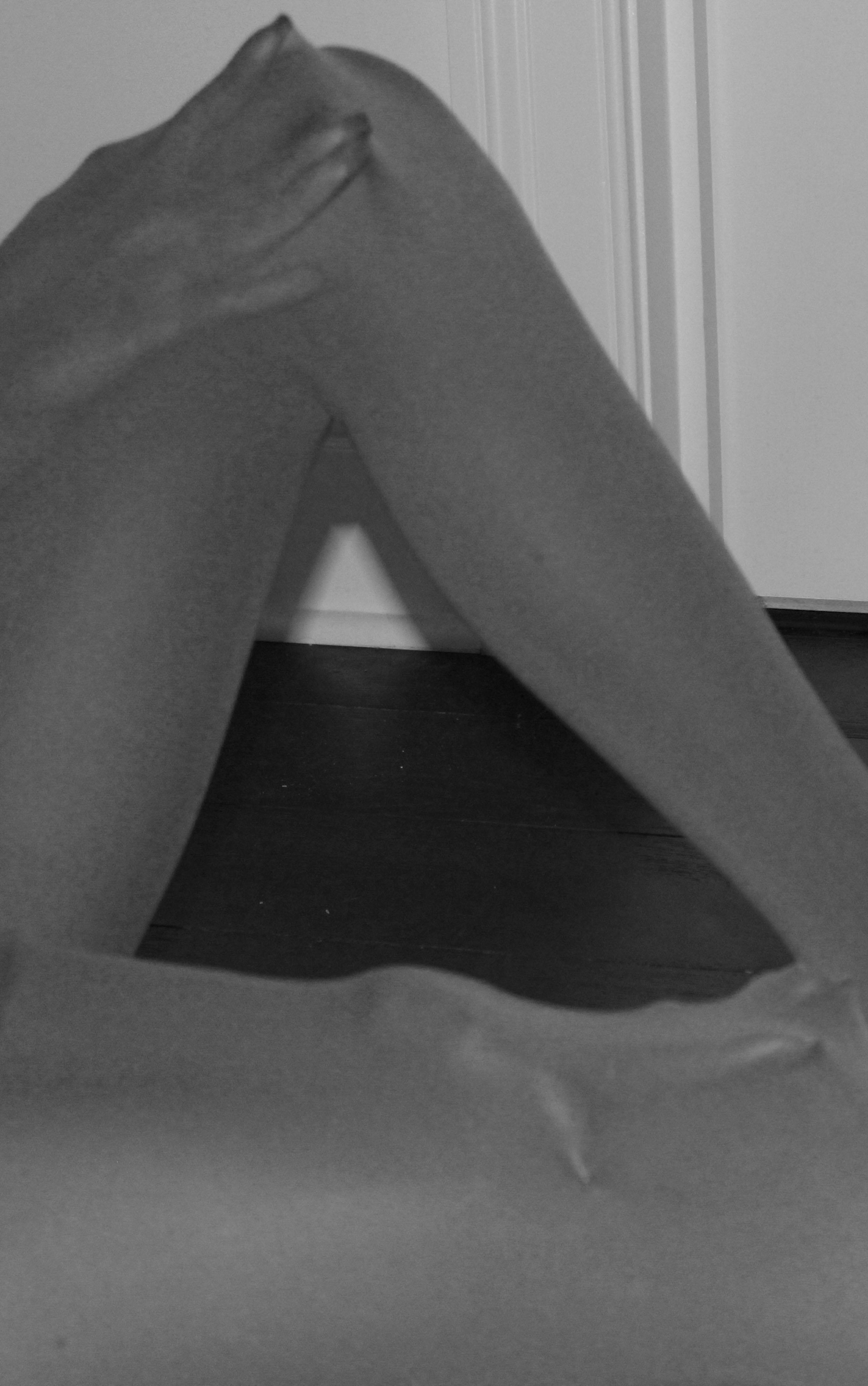
Jolie Leonard, 11th

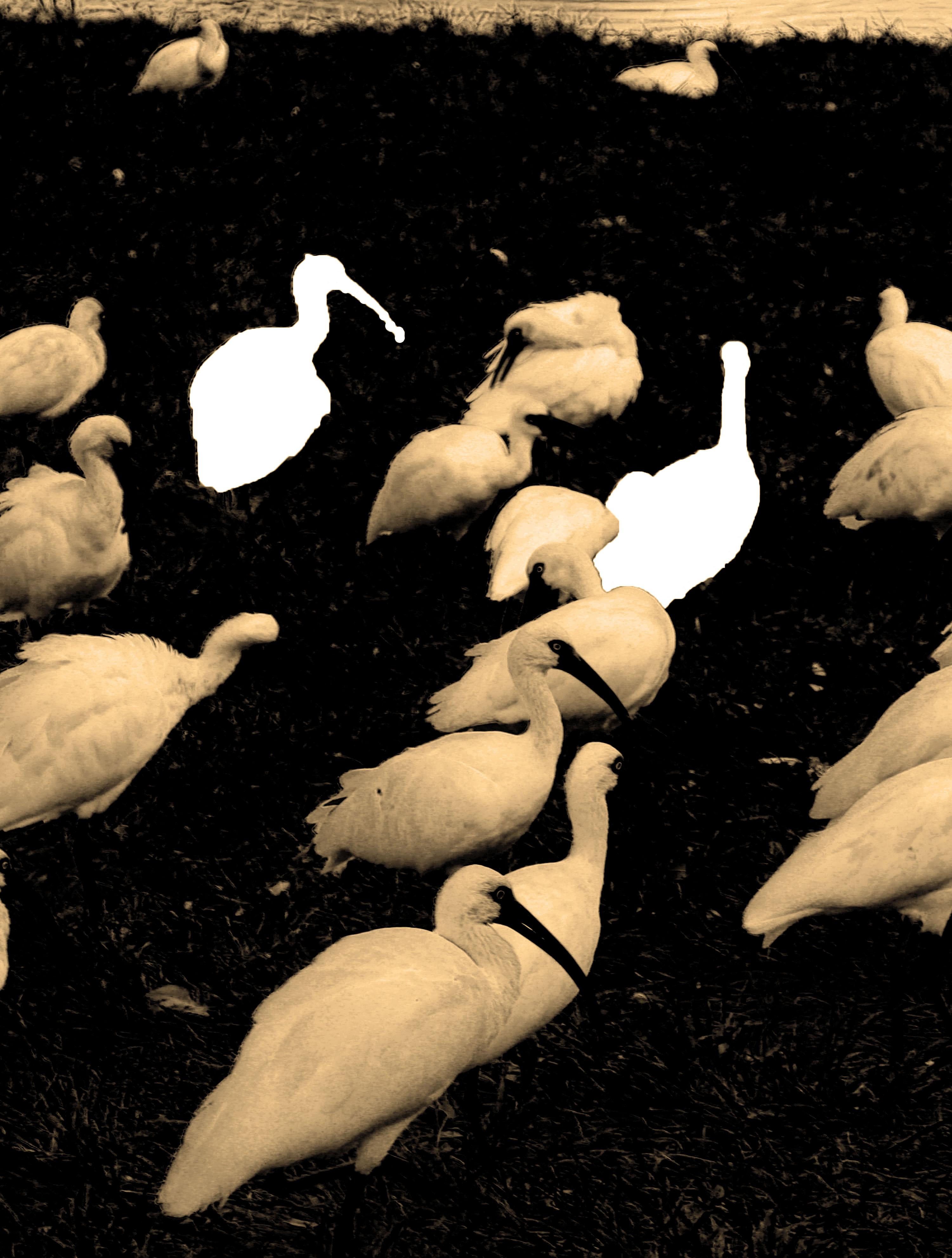
Jolie Leonard, 11th
Digital photography
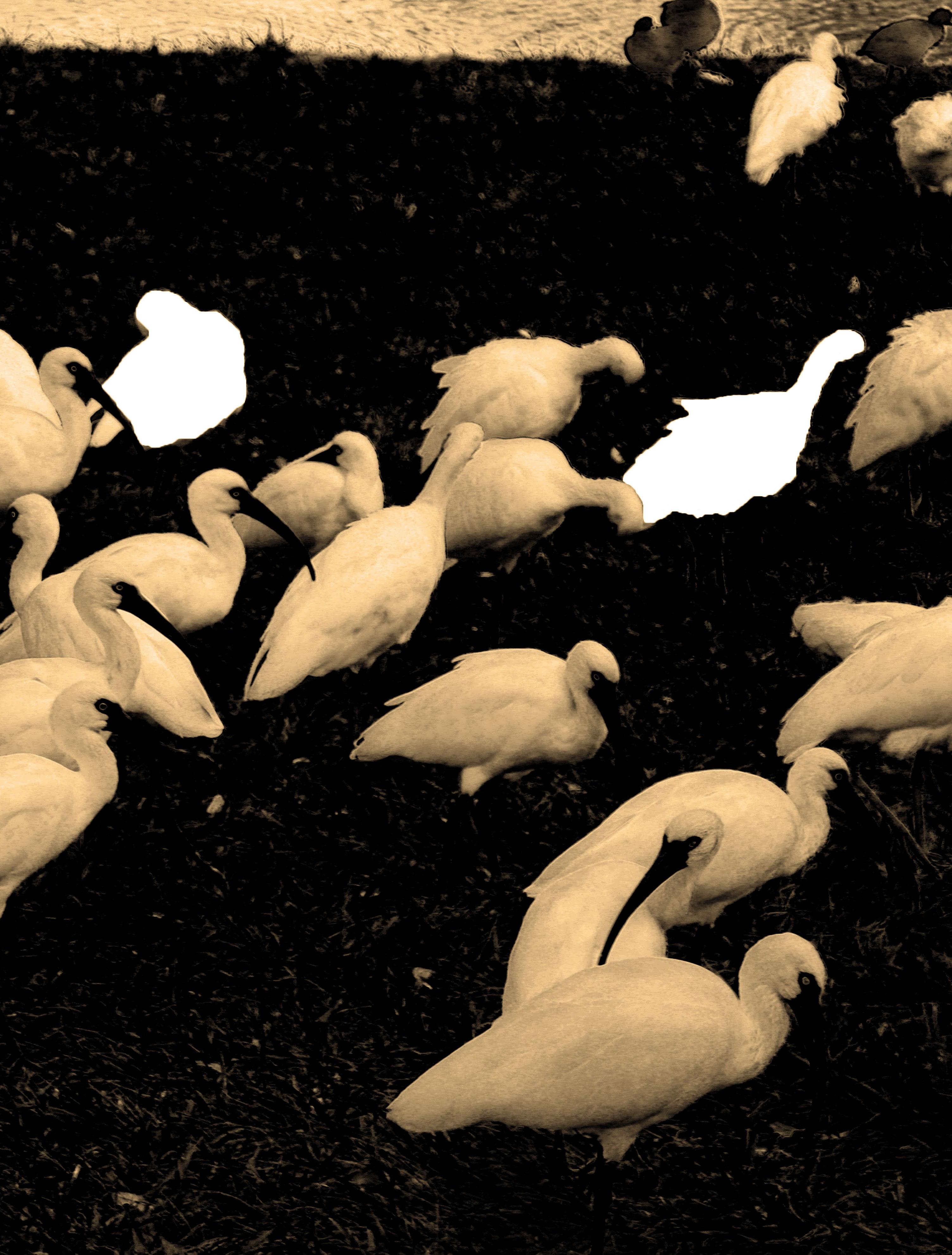
The sting of an ambition falling dead Will never be quite foreign as it should.
How far my arms sit outstretched before me? How tall must I stand to be just-so-close?
The mountain of my dreams will stay aloft. Aloft on its cloud of “what-could-have-been”.
I feel my few certainties fall and slip, What the future holds, what the past has meant. The unequivocally true stammers In face of this still-swelling sierra.
But hark! I pull myself to climb again— These gravelly slopes falling under tread. With step in step, this tedious crest falls, A brilliant warmth, the stones ahead dwindle.
Close I may be, again I am blown off. Toppled off the peak so high above, Like frames in a movie, my tracks retraced. Batting me down, this trail shows scarcely love.
As I sit, my mountain stares—it judges. A soreness I can’t forget—it lingers. This page in my chronicles of failure, Never quite gone, it lay among the dead.
Quietly, my mind shuffles left to right. This enchanting dance, my self sabotage. Again I prepare my path to climb. The foot of my mountain echoes sharp cries.
The sting of an ambition falling dead Will never be quite foreign as it should.
A soliloquy of faces
People in spaces
All blend together
But each so unique.
A lifetime of terror, Of love, Of Pain, Of humor.
(each wrinkle, a feature of the above)
Baby’s faces, smooth as the crystal surface of a still lake. Old, aged faces, dated with dimples and craters, a sandpaper moon.
Together they come, Hand in hand, To shape the Tiled mosaic of humanity.
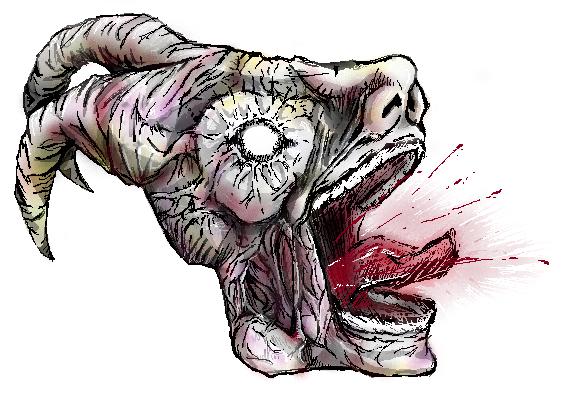
Critter
Cooper Velie, 12th
Digital drawing
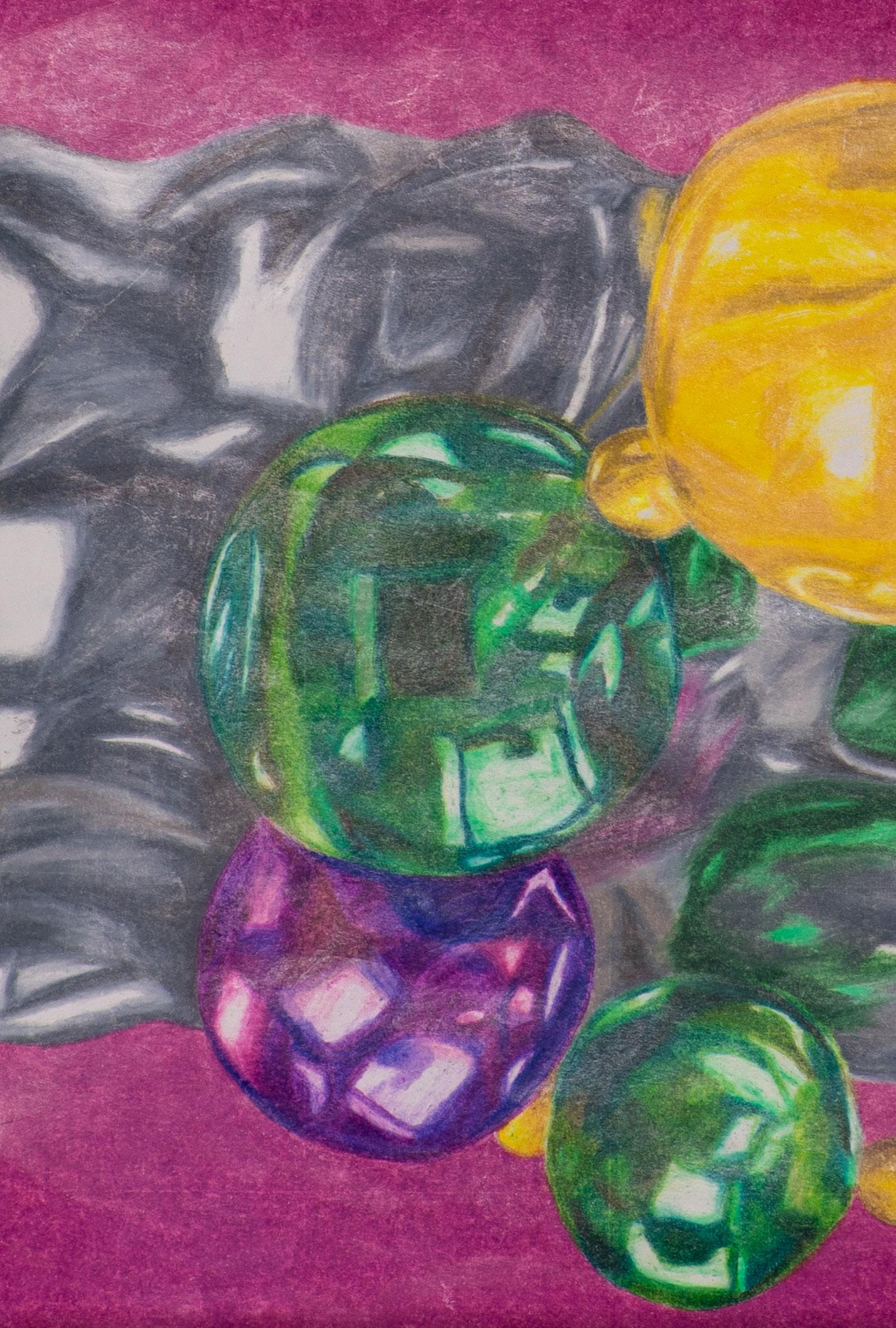
Throw Me Something Mister! Chloe Novick, 12th Colored pencil on paper
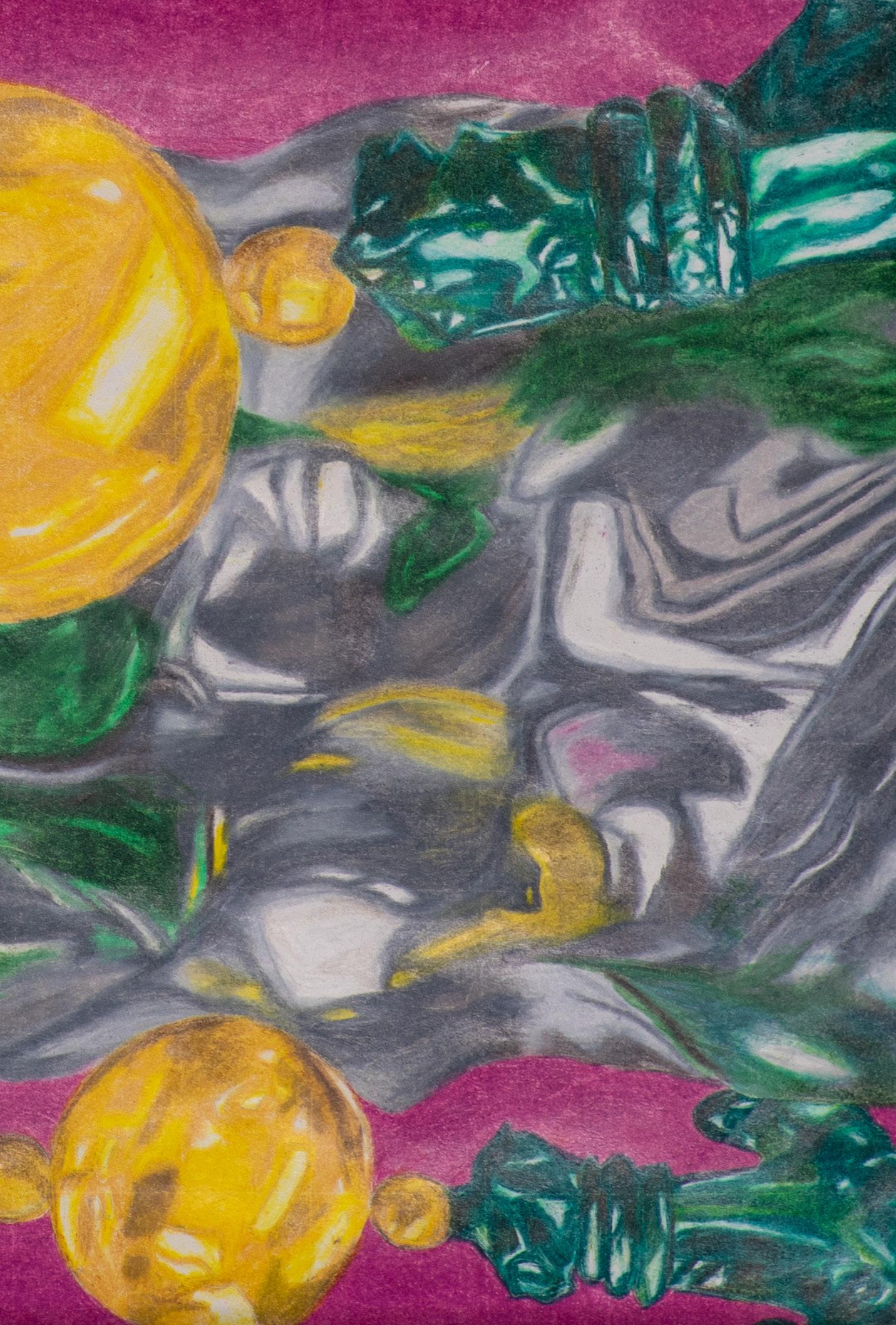
Like dehiscence in a festering wound, mistrust is the noxious force dividing mainstream media and the public. Media mistrust is the biggest issue journalists face today.
Media mistrust contributes to an increasingly ignorant, polarized society, as people selectively read news that caters to their opinions. Often, this mistrust is targeted toward particular news organizations. The skepticism of news contradictory to one’s beliefs creates a damaging cultural divide. In turn, if the public does not trust the news, journalists are unable to fulfill their paramount role of educating society.
In the 1960s and ’70s, the news media was one of the most trusted institutions in the United States. Choices in media were limited; there were only three major broadcast networks. Essentially, the entire public got their news from the same organizations. Today, the public has access to far more sources of information. This would seemingly lead to a more informed citizenry, but it has actually had a perverse effect. Media fragmentation allows the public to gravitate to outlets aligning with their views, political and otherwise. Thus, pre-existing viewpoints are reinforced, and people become increasingly siloed. This exacerbates social and political polarization, and, in turn, increases mistrust of the media.
There is a large disparity in trust of the media between supporters of different political parties. A Gallup survey found that trust in the media was 58% among Democrats but was only 11% among Republicans. The gap between these two groups may be explained by how well each group feels represented in the media. Journalists have become more highly educated, and a vast majority in the profession identify with the Democratic party. Additionally, journalists tend to cluster in major, progressive cities, while vacating rural, Republican areas.
By emphasizing transparency and including a diverse range of perspectives, media institutions can re-earn trust. Organizations need to clearly differentiate between objective and opinion pieces to reduce the impression that their reporting is biased. The purpose of objective, fact-based pieces solely should be to inform the public. Therefore, in these stories, journalists’ personal viewpoints should be minimized. Opinion journalism can help spark important conversations and debate; however, if people feel that organizations only publish this kind of material, they may be less inclined to listen.
Journalismneedstoincludevoicesthatrepresentavarietyofdemographics.Asjournalism has become a more elite, urban profession, it has lost crucial diversity. Not only should there be various perspectives in the media as a whole, but individual outlets should include reporters with different points of view. Recently, this has not been the case, which has created more polarization and attacks between media organizations. When people feel they are being heard, they are more willing to listen.
Rising media mistrust is detrimental to journalism. Trust can be regained by increasing transparency and acknowledging the importance of diverse viewpoints. With the torch of knowledge, journalists enlighten society. That flame has been waning, but it can be, and must be, relit.
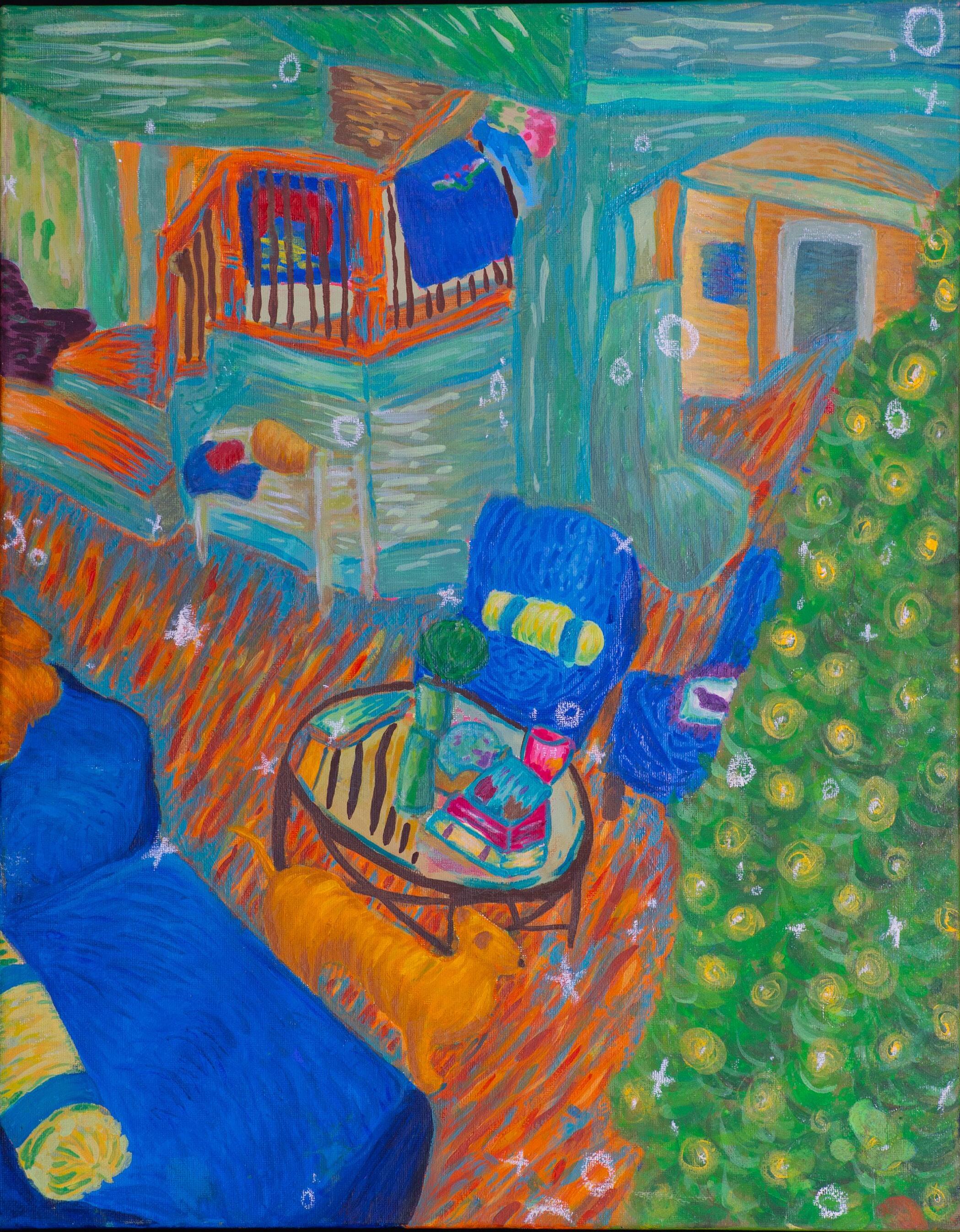
Parrish Kearny,
l did not keep a journal while I was in Zermatt. I remember telling my mom that I would, eyeing the blue leather-bound book on my dining table, and thinking that my semester abroad in Switzerland would be the perfect time to start writing regularly. In the end, I only wrote three pages between September and December. Instead, I took pictures. I’m the proud owner of a little black-and-red Leica with a leather case, which I love and cherish like it’s my child. I had no idea that the pictures I would take would effectively become my diary for the semester, capturing emotions that words could not from the very moment I stepped off the plane.
When 49 other students and I arrived in Zermatt, the first photo I ever took on the camera was of Daphne Anatoli, a stranger from Connecticut. Neither the girl in the photo nor the one who took it knew that they would go on to support each other through everything, from late-night studying to difficult hikes to boy drama. We stuck by each other’s sides from day one, and for that, I am eternally grateful to both her and the photo that captured the beginning of our friendship. The rest of the month is filled with pictures from our first hikes, first geology labs, and first climbs. I hadn’t fully grasped that I was actually living in Switzerland, so there are also plenty of pictures of Zermatt and its surroundings as I explored them for the first time.
Early in October, we traveled to Strasbourg, a city on the border between France and Germany. It is home to countless Gothic cathedrals, and for us Art History students, this trip was like stepping into our textbooks. We were organized into groups and allowed to wander around. If I had kept a diary, I would have written about the stunning cathedrals, the German-style inns, or maybe the four or five baguettes I devoured on my own. But if you were to look through the pictures I took, you could tell what my favorite part of the trip was: my group. We navigated the city, walking miles in uncomfortable shoes to complete our homework packet, all the while evading the street scammers. What started as an unfamiliar combination of people I had barely talked to became five new friends, a few blisters, and countless memories captured on my camera.
By mid-October, the trees around Zermatt had started to change from emerald greens to smoky reds and oranges. We hiked deep into the forests for our geology labs, breaking open rocks and sketching their interiors. I took pictures whenever I found myself staring out across the valley lit up with the autumn pine trees, which was often. For context, Zermatt is a quaint Swiss ski town in the Matter Valley just inside the border between Italy and Switzerland, surrounded by steep mountains and vast pine forests. It is nestled directly beneath the Matterhorn, which, in addition to being pictured on Toblerone packages, is one of the tallest mountains in the Alps. During this time, I went on various weekend trips—the hot springs in Leukerbad, climbing Mount Pollux, walking on a glacier in crampons, holding my breath across a suspension bridge, and staying overnight in a sulfur-smelling hut. I tried my hardest to capture the beauty of each moment with my Leica.
In early November, we left for Venice. Like in Strasbourg, we were free to walk around unchaperoned through Venice, even taking boats to different islands. However, unlike Strasbourg, I fell in love with the city. The ancient canals of Venice brimming with vibrantly painted gondolas, the Doge’s Palace decorated from wall to wall with paintings in luxurious golden frames, the Rialto with its intricate stone masonry, and the picturesque sunsets from the top of St. Mark’s Campanile gave me a genuine passion for exploration and art. The trip did not end in Venice, though. We
stopped in Bergamo, where stracciatella ice cream was invented, and Verona, the setting of Romeo and Juliet. But my favorite stop was Sirmione, a resort town in the middle of Lake Garda. The moment I laid eyes on this town with its castle ruins, pruned forests, and ivy-covered buildings, I promised myself I would retire there. The photos from this trip remain some of my favorites from the entire semester.
Returning to Zermatt, where snow clouds had begun to loom over the valley, I immediately longed for the smell of seawater and warm weather. But as soon as ski season began, my cravings faded. We were lucky enough to hit the slopes on the very first day they opened to the public, and from that day forward, we skied every day between classes. There is no feeling quite like flying down a snowy mountain, the sun warming your back and your hair whipping behind you. I did not take many photos on the mountain for fear of damaging my camera, but the few ones I took are of pure happiness, whether on the gondola ride up the mountain or in one of the food courts eating overpriced samosas.
The last few weeks before the semester’s end on December 10 were hectic with studying for exams while sensing the quiet sadness among the students. The realization that we would soon be separated after seeing each other every second of every day didn’t hit us until the final week. The last photos on my camera tell the story of those bittersweet days. If you look through the pictures, you’ll see more and more photos of my friends, as well as little, seemingly mundane things around Zermatt that I never want to forget. A bike with a bag of potatoes tied on the back, a snow-covered Christmas tree, my teachers huddled together at a concert, the train station where we first arrived, and groups of students singing together. These small snapshots of my last days in Zermatt were my last-ditch effort to absorb as much of the town as I could before I left.
On the final day, we woke up at sunrise and rode the train one last time to the top of Gornergrat, where our director, KR, gave an inspirational speech. He set us free to use the day however we wanted, and my friends and I chose to ski. The snow was perfect—even and smooth, with just enough powder on the top to glide down the mountain like a knife through butter. I skied the whole time, surrounded by my favorite people, looking out on the valley where my life had been forever changed and eating at my favorite restaurant. For the first time in three months, I was dreading the next day. I wanted so badly to write my feelings from the experience, but I felt like my words could never express how painful it would be to step on the plane back to New Orleans. I had my camera on me every minute of the final night to photograph the last moments with my classmates. I wanted nothing more than to freeze time, to bask in the warmth of friendship and new experiences for a month or two longer, so I took photos of everything I could to preserve every detail of the night. The photos from December 9 are the only ones from the entire semester where I’m frowning.
And just like that, it ended as soon as it began. I only had the memories and photos I took to fill the 49-person-large hole in my heart. This story, and the pictures on my Leica, do not begin to express the ways Swiss Semester changed me for the better. I met people from the entire world, learned things I would have never thought to question, and went to places some people never get to visit. And through it all, my camera was by my side. At first, I focused on scenery instead of socializing, then became fascinated by the art around me, and finally branched out completely to my fellow peers. Do I wish I had kept a diary? Of course. But by studying what I chose to capture, I stay connected to my emotions during those three months in ways a few dozen pages of writing never could.
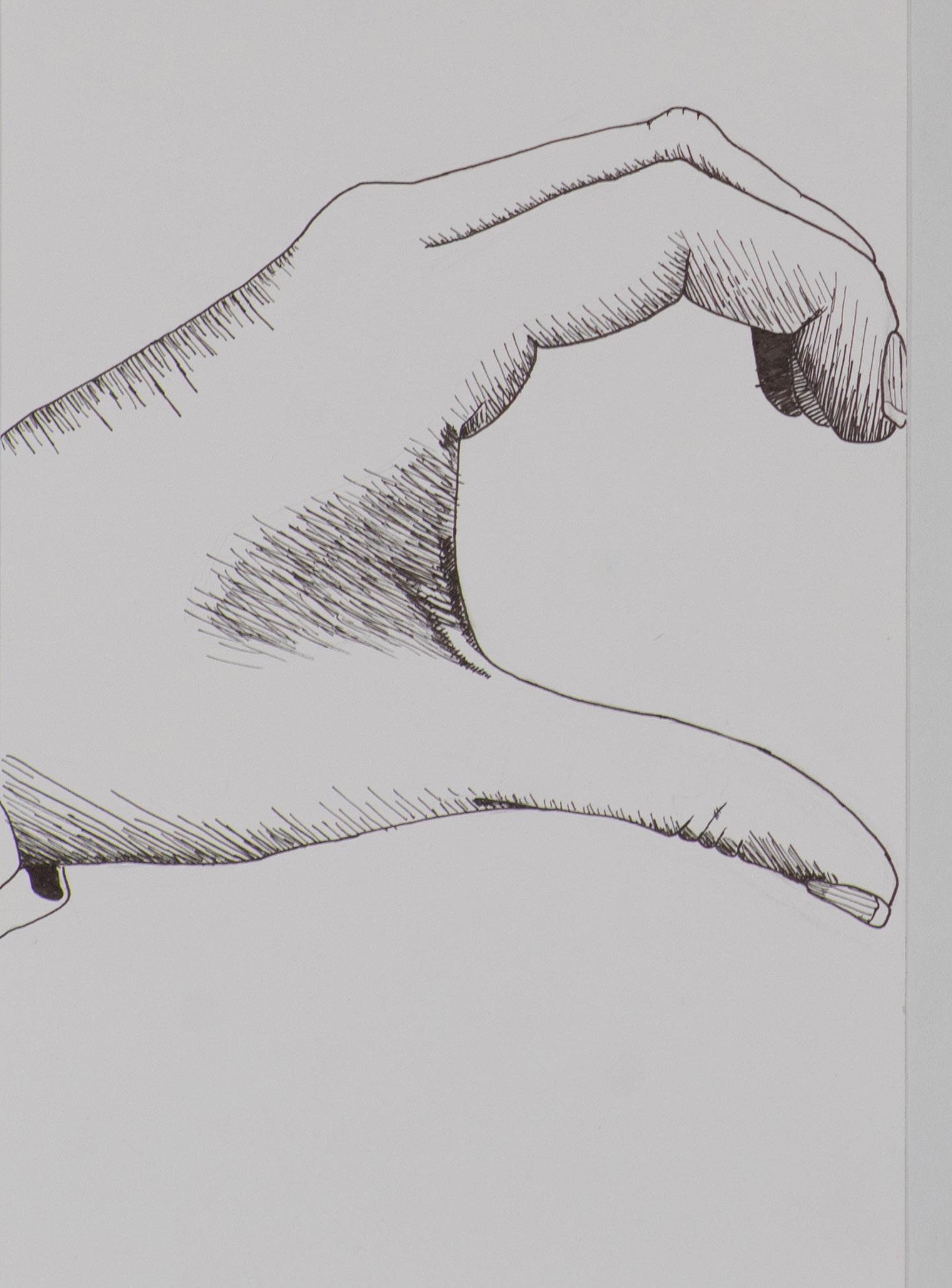
Hands
Finley Freedman, 11th
Colored pencil and pen on paper
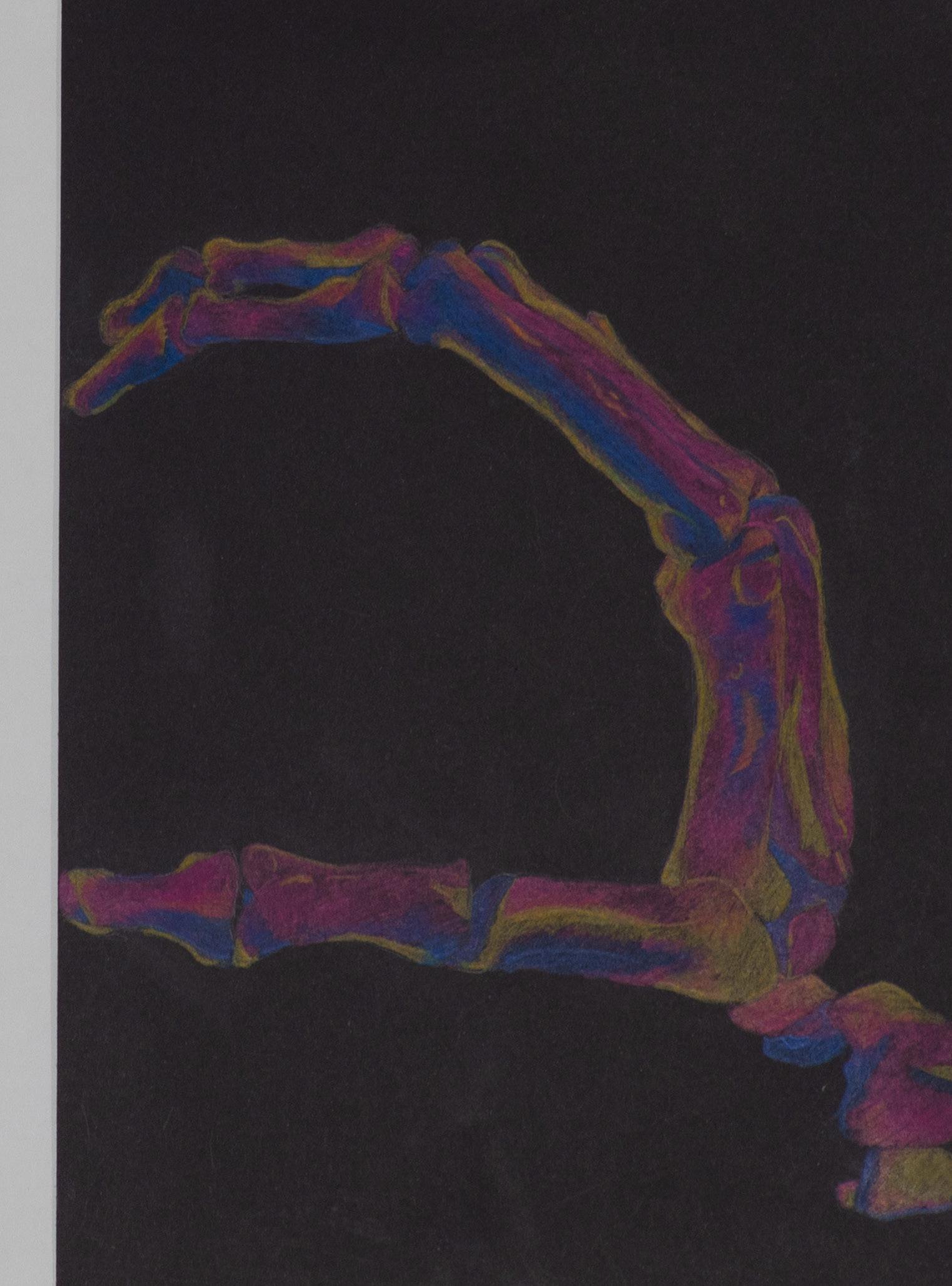

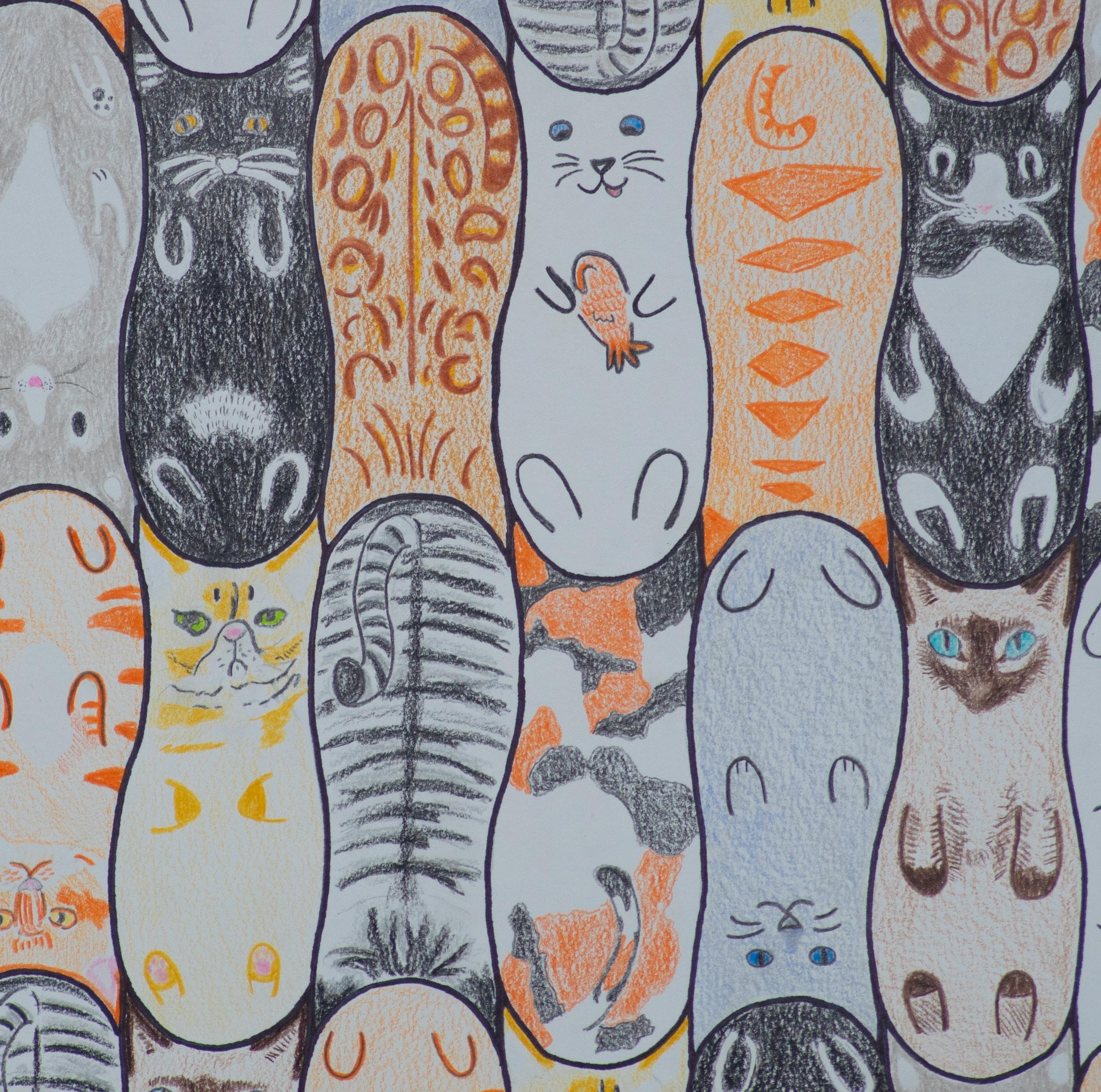
Nayara de Silva-Ahmed, 9th
Colored pencil on paper